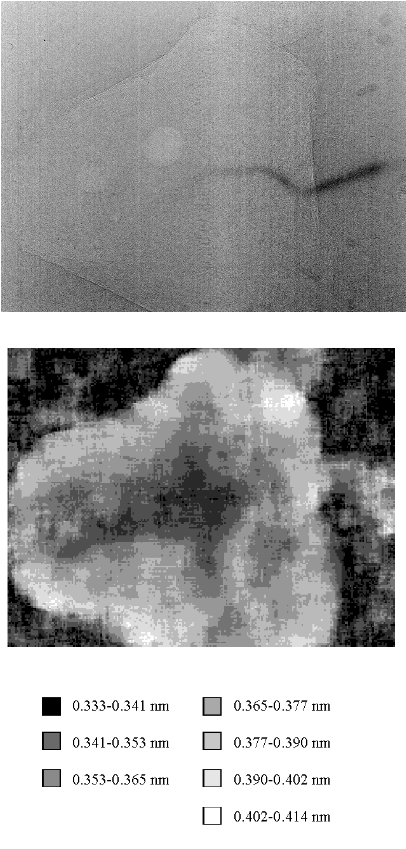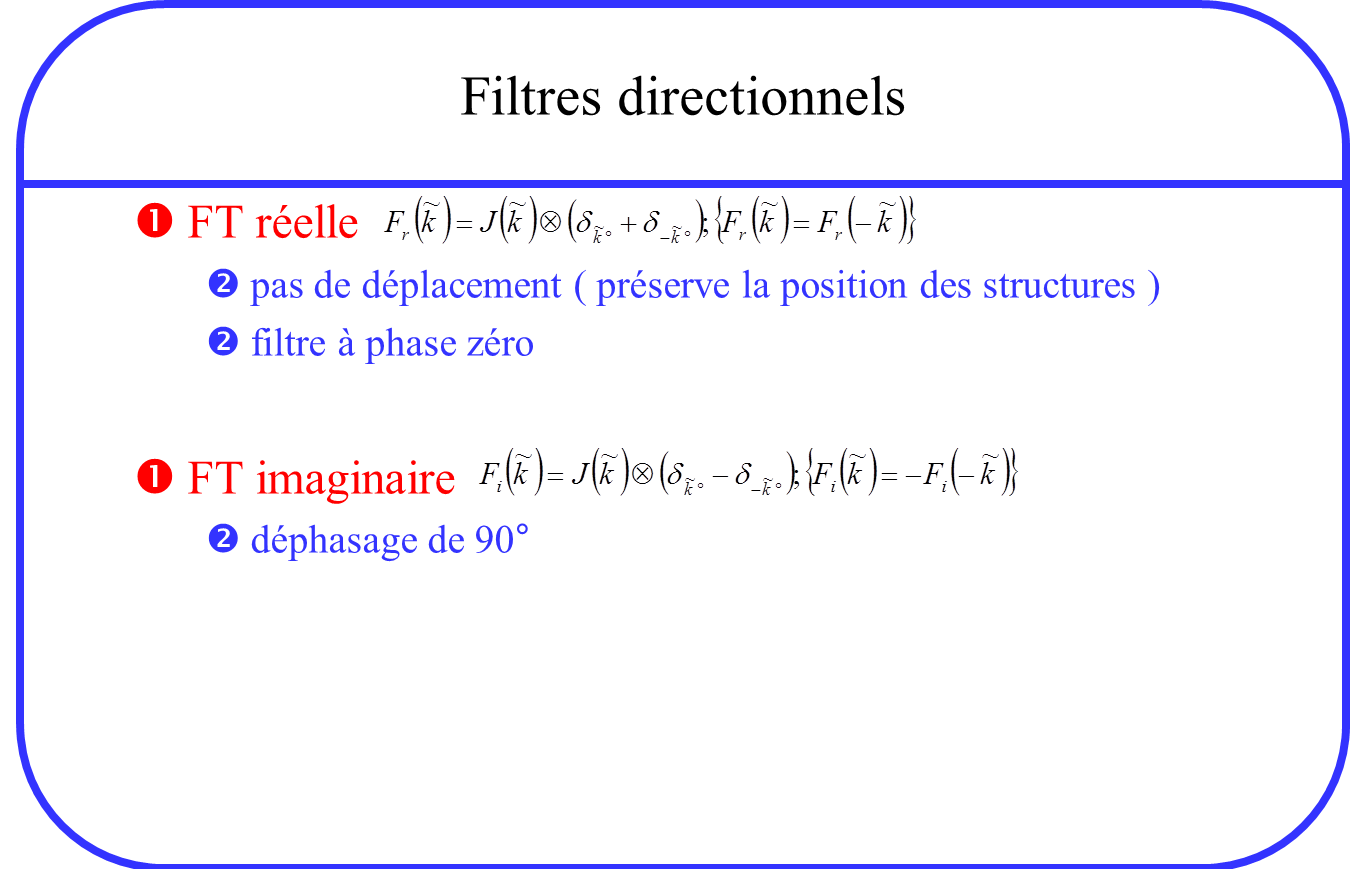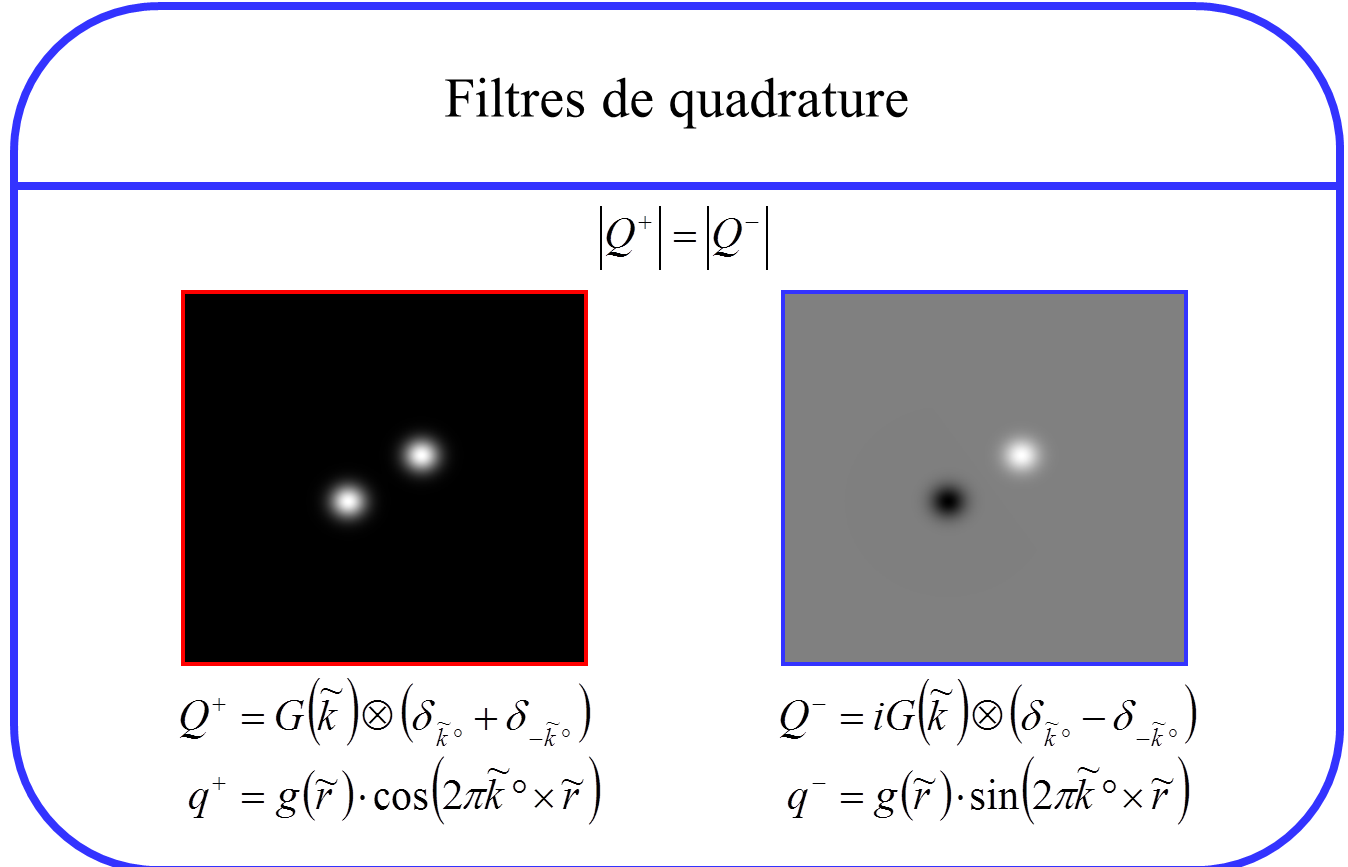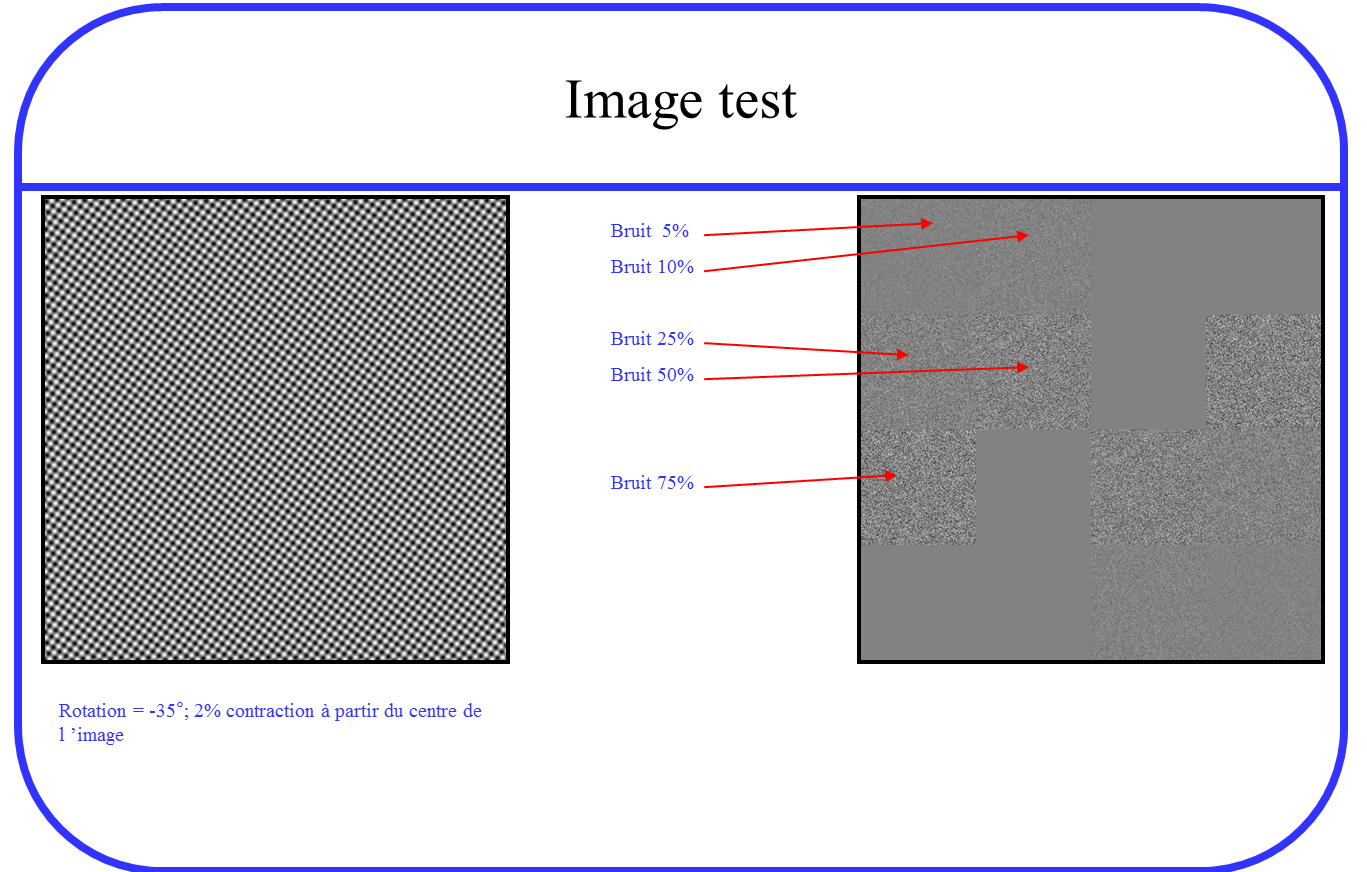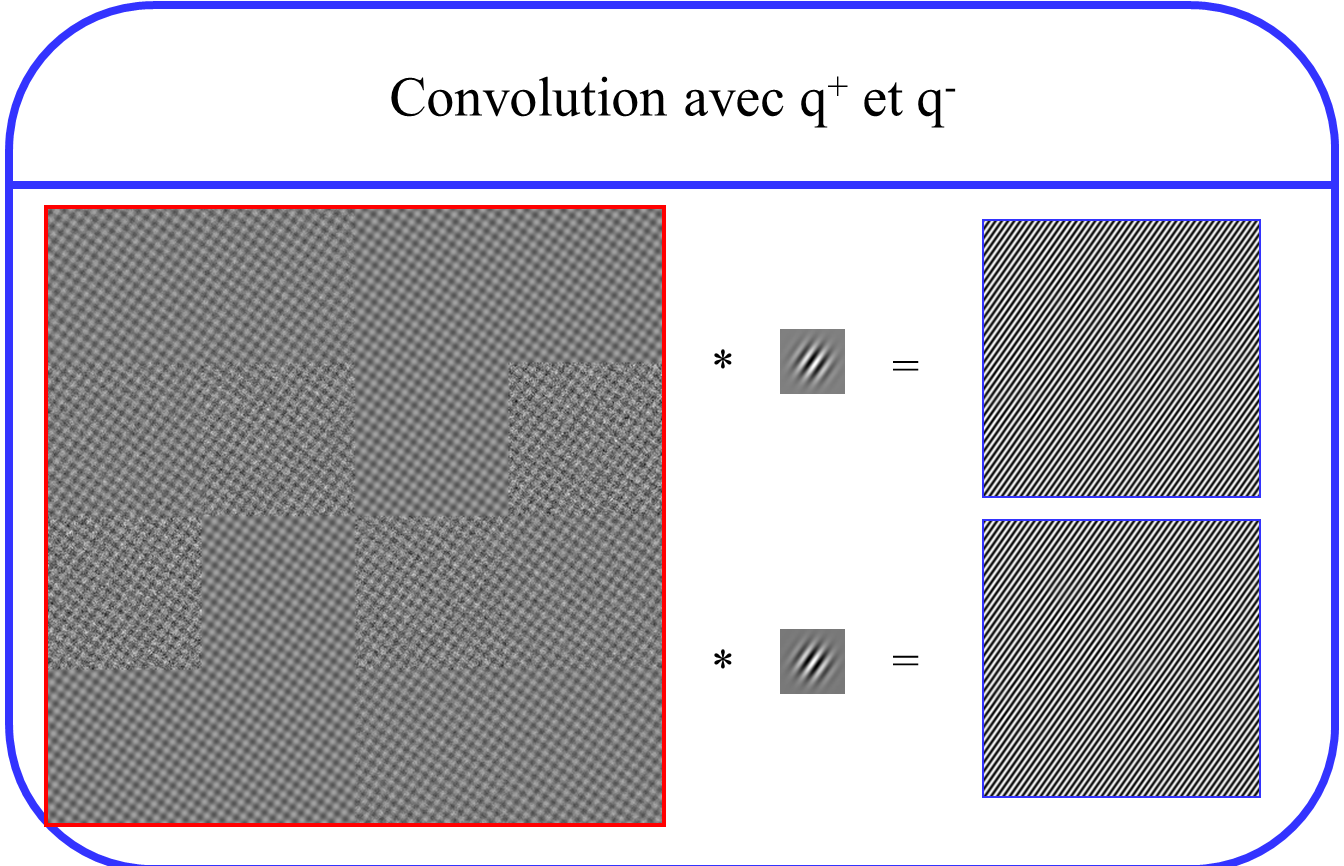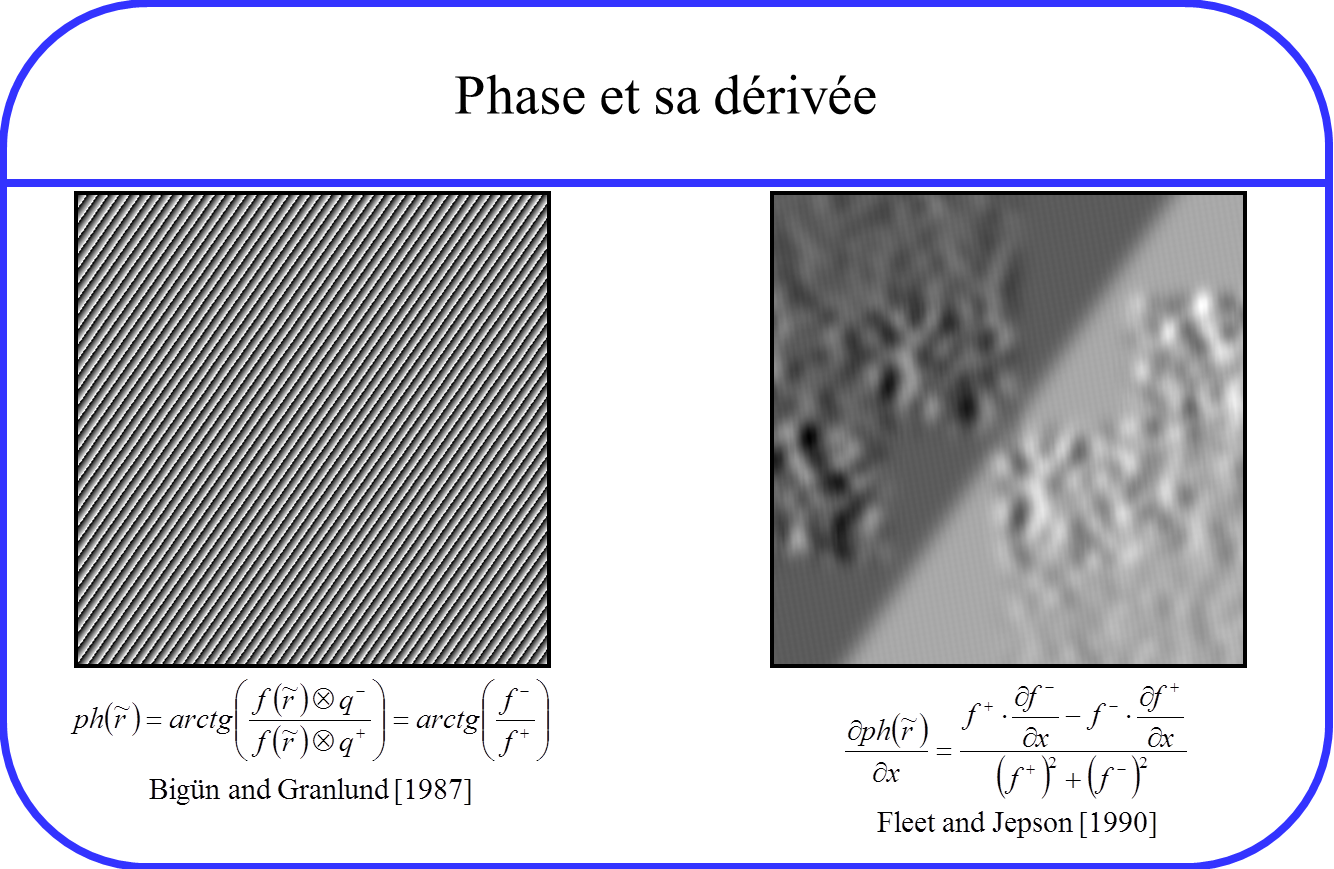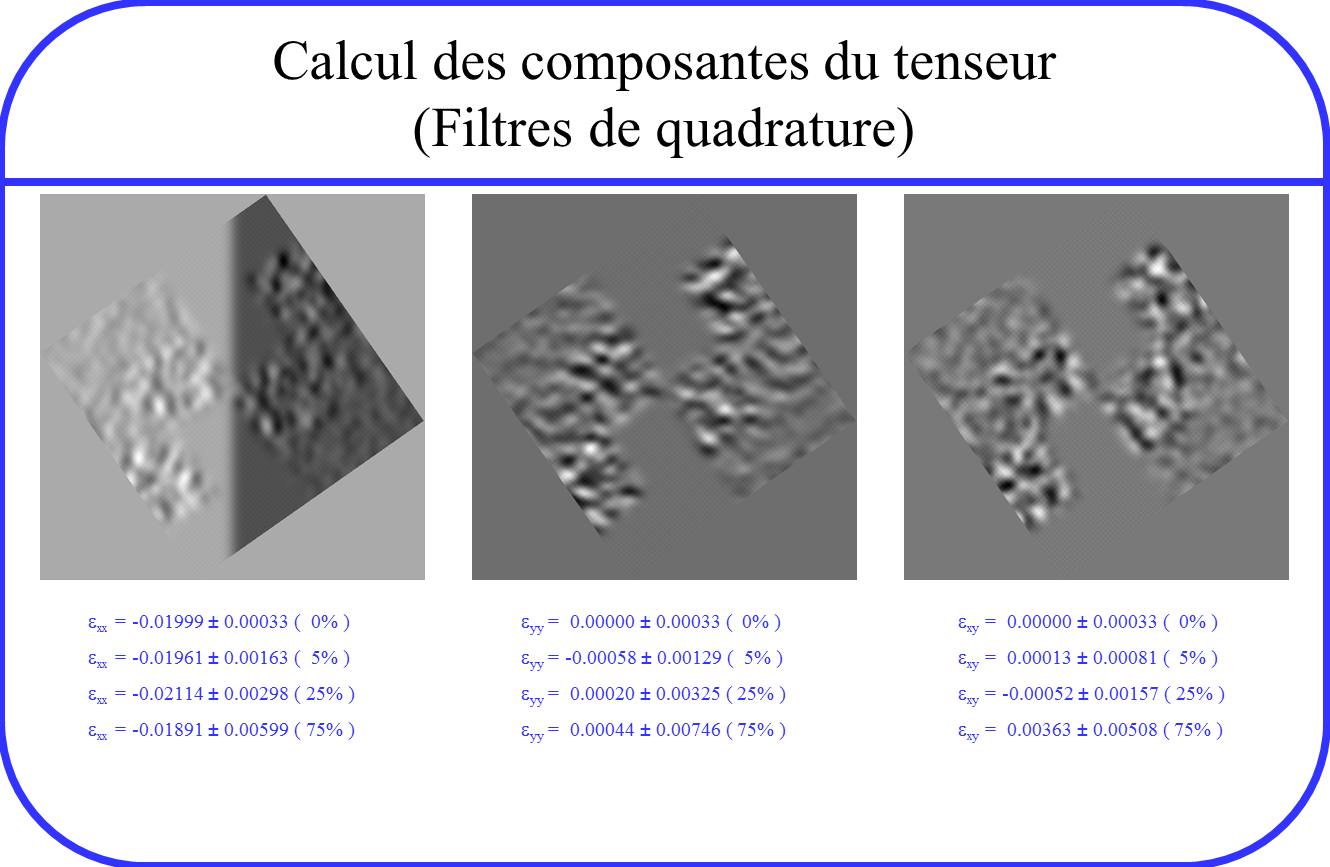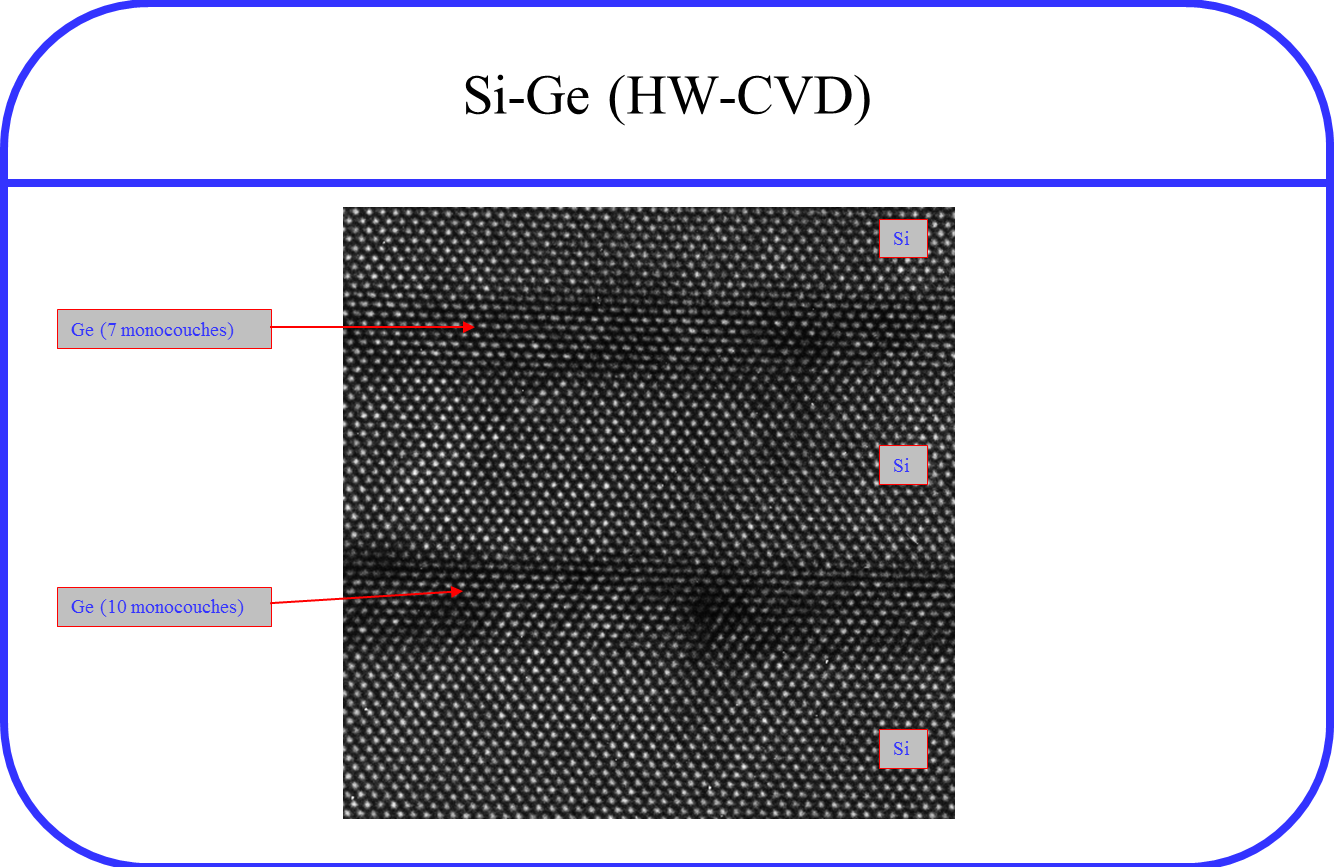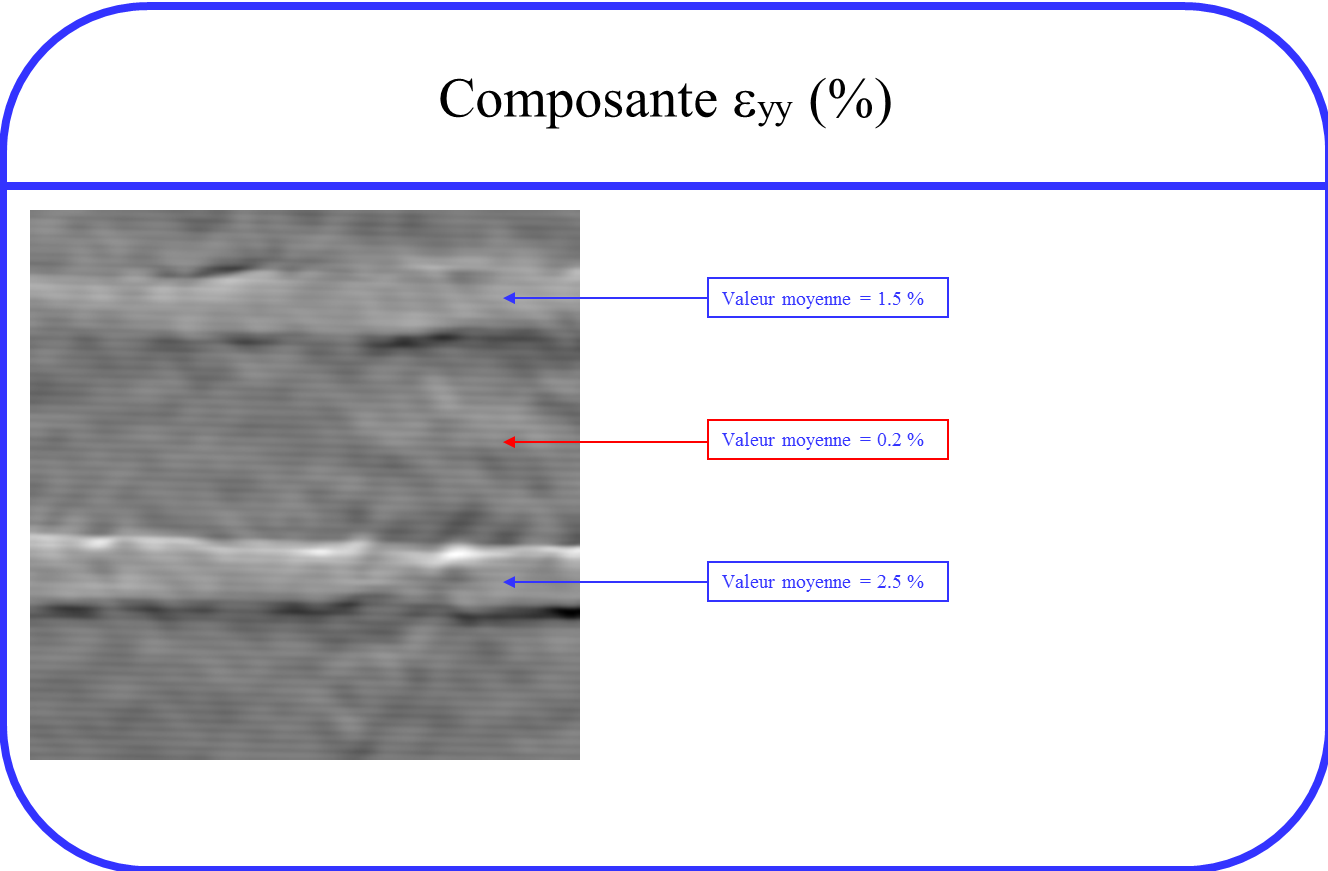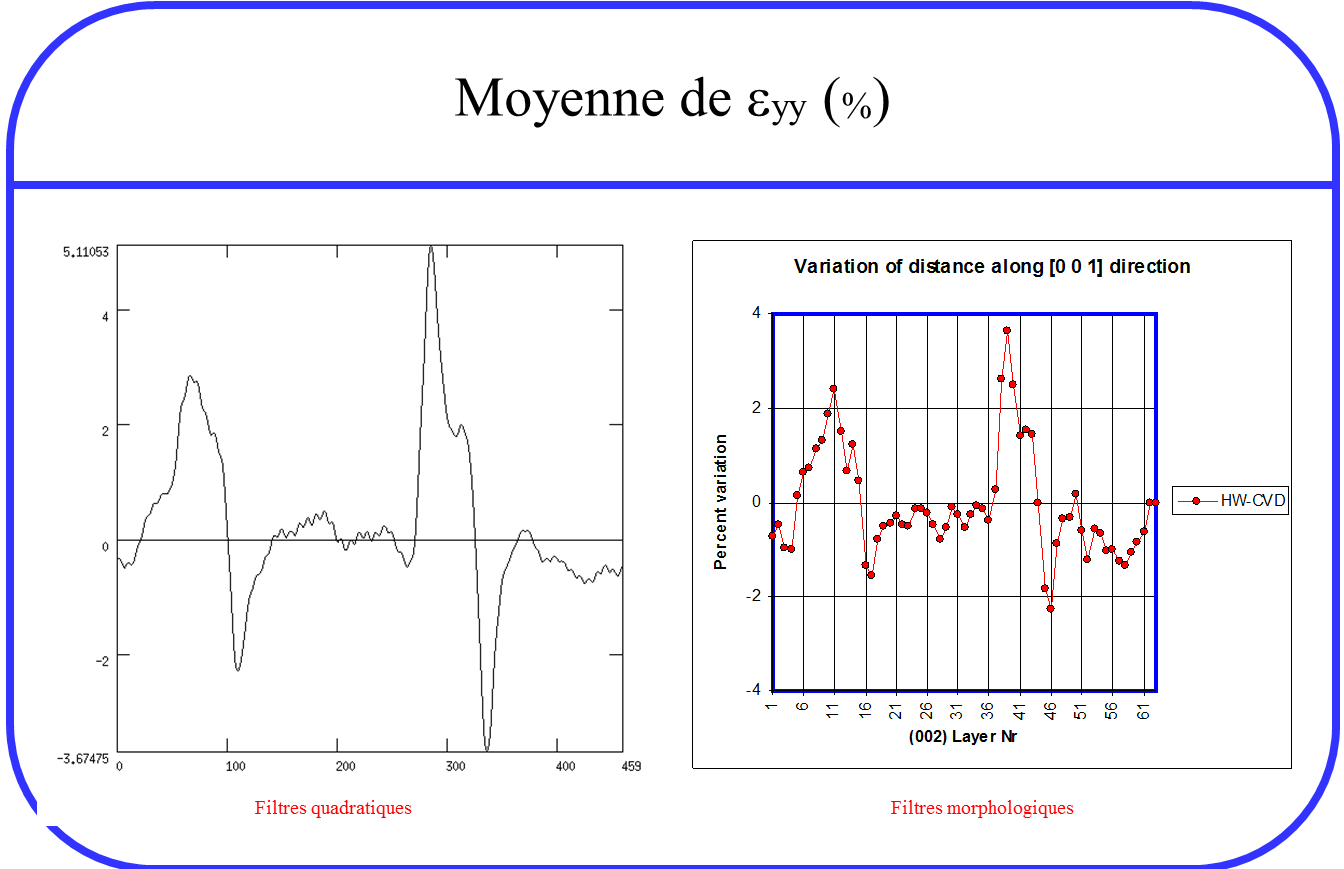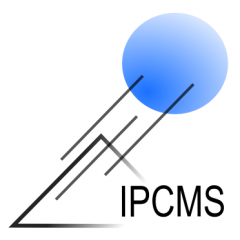Parcours universitaire
Thèse de l’université Louis Pasteur à Strasbourg en 1987 : Propriétés des catalyseurs intermétalliques platine-uranium, platine sur oxyde d’uranium et platine-cobalt-oxide d’uranium sur alumine pour les réactions de réarrangement de squelette des hydrocarbures.
Diplômé de l’Université de Messine en 1983 en chimie-physique du solide : Chimie structurale de composés de Th(IV) avec ligands oxygène.
Fonctions à l’Institut
Au sein de l’institut je développe de méthodes d’acquisition et de traitement du signal adaptées à des techniques variées de microscopies (STM, AFM, MET, MEB, microscopies optiques confocales et microscopies multiphotoniques résolues en temps). Mon activité comprend aussi bien l’élaboration de méthodes d’acquisition et de traitement de signaux, que leur analyse et leur interprétation en collaboration très étroite avec les chercheurs de l’Institut. Le choix des techniques d’interfaçage et leur implémentation dans le langage informatique adapté font aussi partie de mes prérogatives.
Stages, Cours et travaux pratiques dispensés
Socrates exchange programco-responsable de stage Formation permanente CNRSco-responsable de formation , partie traitement et analyse d’image Formation permanente CNRSseul responsable de formation DESS Instrumentation et Méthodes d’Analysesseul responsable de stage DESS Instrumentation et Méthodes d’Analysesseul responsable de stage DESS Instrumentation et Méthodes d’Analysesseul responsable de TP DESS Instrumentation et Méthodes d’Analysesseul responsable de stage DESS Instrumentation et Méthodes d’Analysesseul responsable de TP
Publications en tant qu’auteur principal
Broad distribution effects in sums of lognormal random variables Local lattice distorsions in spherical carbon nanoparticles as studied by HRTEM image analysis HRTEM study of strained Si/Ge multilayers Quantitative XPS study of the reduction of cerium dioxide Photoemission study of Pt adlayers on Ni(111) Support effects in test reactions of hexanes on Pt/UO2 catalysts and on a Upt3 intermetallic compound Thèse présentée à l’Université Louis Pasteur de Strasbourg pour l’obtention du grade de Docteur en chimie. Tesi di Laurea dell’Università di Messina Publications récentes
Communications orales
GDR-Relax Techniques de traitement d’images, Toulouse (2000) Trinocular Conference on Microscopies, Strasbourg (1998) EMRS-97, Strasbourg (1997)
Exemples de développements marquants
Microsystèmes photo-stimulables
Ce projet particulièrement ambitieux, auquel j’ai participé activement, visait à construire un microscope de fluorescence induite par l’absorption simultanée de deux-photons pour lequel l’acquisition des images est effectuée à cadence vidéo.
Ceci constitue un challenge à la fois du point de vue des systèmes électronique, optique et informatique à mettre en œuvre. En effet, il s’agit d’acquérir et de traiter plus de 107 informations par seconde, ce qui dépasse les capacités habituelles des systèmes commerciaux. En outre, un dispositif d’analyse de la dynamique des systèmes biologiques étudiés (dispositif dit « pompe-sonde » permettant d’accéder à des échelles de temps de l’ordre de la femtoseconde) est installé sur le microscope biphotonique. Ce travail multidisciplinaire a rassemblé, outre le chercheur responsable de l’opération, un thésard, un ingénieur de recherche en optique et deux enseignants chercheur. Ma tâche a été de coordonner toutes les fonctions informatiques liées au projet lui-même sous la forme d’un programme de gestion de ce système complexe qui comprend des systèmes d’acquisition de données (photomultiplicateurs, détecteurs UV-visible, camera CCD refroidie), un spectromètre, ainsi que de multiples positionneurs nanométriques.
Microscope de fluorescence
J’ai été également engagé sur un autre projet innovant portant sur les microsystèmes photo-stimulables qui sont des assemblages supramoléculaires. Ces assemblages orientés constituent des micro-actuateurs, dont la taille peut être modifiée sous l’effet de stimuli extérieurs, comme une variation de température ou une irradiation classique sous lumière UV. Des réseaux de diffraction à pas variable ont été ainsi réalisés par la technique de photo-polymérisation induite par absorption à deux photons.
Traitement et analyse d’images
L’essor de l’image dans l’instrumentation scientifique a contraint l’IPCMS à se donner les moyens pour constituer un service de traitement et analyse d’images. Étant moi-même producteur d’images scientifiques (Imagerie chimique par microscopie Auger à balayage) j’ai donc décidé d’une reconversion de ma fonction afin d’accompagner le développement progressif au laboratoire des techniques de caractérisation morphologique. Avec l’effort mis également sur les microscopies électroniques (en transmission et à balayage), de nombreux thèmes de recherche d’importance fondamentale ont été directement liés au traitement et à l’interprétation des images obtenues. J’ai donc pris en main, en 1995, le développement de ces nouvelles méthodes de traitement.
Cette branche de mon activité vise l’extraction et la mise en exergue de renseignements contenus dans les images produite par nos instruments scientifiques et elle est compliquée par la nature forcément non-routinière des images produites, qui m’obligent à mettre en œuvre des nouvelles méthodes d’analyse quasiment pour chacune d’entre elles. Je me suis donc dotés de toute une panoplie de programmes performants tels que analySIS de Soft Imaging System, ImageJ du NIH (National Institutes of Health), Khoros de Khoral Inc. et DigitalMicrograph de Gatan inc., que j’utilise en fonction de leur champ d’application caractéristique.Un effort particulier est porté sur la conception et le développement de techniques d’analyse d’images adaptées aux problématiques scientifiques posées. En guise d’exemple les deux images à coté de ce texte montrent, respectivement, le cliché de microscopie électronique à transmission d’un « tripode de carbone » et la quantification de son champ de déformation. Dans ce cas la symétrie circulaire ainsi que la présence abondante de défauts de structure empêche l’emploi de techniques devenues d’utilisation standard tel que la méthode des phases géométriques à l’avantage de ma technique basée sur le calcul de la « distribution radiale moyenne » qui non-seulement exploite la symétrie circulaire de ces objets mais, en plus, est beaucoup moins sensible au « bruit » introduit par les défauts de structure.
Utilisation des filtres/transformée d’Hilbert
Le but de ce travail a été d’élaborer des filtres non-linéaires capables de distinguer le bruit engendré par la chaîne de mesure et le signal lui-même (adaptive filters). En effet, un filtre linéaire se limite à atténuer de la même façon le signal et le bruit ce qui, en général, ce n’est pas exactement le résultat recherché. Nous avons utilisé ces filtres pour la détermination du tenseur de déformation dans une image HR-TEM d’un échantillon de multicouches Si-Ge.
L’utilisation de filtres directionnels permet d’atteindre cet objectif. Il en existe de deux types :
Filtres à fonction de transfert (FT) réelle Filtres à FT purement imaginaire
Un cas particulier de ce type de filtres sont les filtres de quadrature qui sont généralement utilisés pour effectuer la transformée de Hilbert.
Voici le résultat (à droite et en bas) de cette transformation sur une image test (à droite et en haut) avec différents niveaux de bruit “normal” qui représente un réseau “idéale” carré tourné de 35° par rapport à la base et qui possède une contraction des distances inter-planaires de 2% à partir du centre de l’image.
En calculant la phase des transformées de Hilbert en suivant la méthode proposée par Bigün et al. et en les combinant comme préconisé par Fleet et al. nous avons pu calculer les différentes composantes du tenseur de déformation.
On peut remarquer que le résultat sur les composantes du tenseur (voir figure à droite et en bas) est en parfait accord avec les valeurs attendues même pour de rapports signal/bruit aussi bas que 4/3 et, surtout, que l’atténuation du filtre sur le bruit et beaucoup plus importante que celle sur le signal lui-même.
L’application de cette méthode à une image HR-TEM de multicouches contraintes de Si/Ge montre un parfait accord entre le résultat obtenu par la transformée de Hilbert et celui que nous avions déjà obtenu en appliquant des méthodes issues des mathématiques morphologiques qui sont, elles, particulièrement robustes vis à vis de la présence de bruit mais de mise en œuvre laborieuse [M. Romeo et al. (HRTEM study of strained Si/Ge multilayers, Thin Solid Films, 319 (1998) 168-171)].
Articles
1839302
romeo
1
surface-science-reports
50
creator
desc
year
4931
https://www-ipcms.u-strasbg.fr/plugins/zotpress/
%7B%22status%22%3A%22success%22%2C%22updateneeded%22%3Afalse%2C%22instance%22%3Afalse%2C%22meta%22%3A%7B%22request_last%22%3A0%2C%22request_next%22%3A0%2C%22used_cache%22%3Atrue%7D%2C%22data%22%3A%5B%7B%22key%22%3A%22EK4VV63K%22%2C%22library%22%3A%7B%22id%22%3A1839302%7D%2C%22meta%22%3A%7B%22creatorSummary%22%3A%22Taupier%20et%20al.%22%2C%22parsedDate%22%3A%222012%22%2C%22numChildren%22%3A1%7D%2C%22bib%22%3A%22%3Cdiv%20class%3D%5C%22csl-bib-body%5C%22%20style%3D%5C%22line-height%3A%201.35%3B%20%5C%22%3E%5Cn%20%20%3Cdiv%20class%3D%5C%22csl-entry%5C%22%20style%3D%5C%22clear%3A%20left%3B%20%5C%22%3E%5Cn%20%20%20%20%3Cdiv%20class%3D%5C%22csl-left-margin%5C%22%20style%3D%5C%22float%3A%20left%3B%20padding-right%3A%200.5em%3B%20text-align%3A%20right%3B%20width%3A%201em%3B%5C%22%3E%5B1%5D%3C%5C%2Fdiv%3E%3Cdiv%20class%3D%5C%22csl-right-inline%5C%22%20style%3D%5C%22margin%3A%200%20.4em%200%201.5em%3B%5C%22%3EG.%20Taupier%2C%20M.%20Saad%2C%20M.%20Romeo%2C%20O.%20Cre%26%23x301%3Bgut%2C%20A.%20Boeglin%2C%20L.%20Mager%2C%20A.%20Barsella%2C%20H.%20Arhach%2C%20J.-L.%20Rehspringer%2C%20K.D.%20Dorkenoo%2C%20Sum-frequency%20generation%20in%20sol-gel%20material%20doped%20with%20binaphthol%2C%20Applied%20Physics%20Letters%20101%20%282012%29%20241911.%20%3Ca%20class%3D%27zp-DOIURL%27%20href%3D%27https%3A%5C%2F%5C%2Fdoi.org%5C%2F10.1063%5C%2F1.4772001%27%3Ehttps%3A%5C%2F%5C%2Fdoi.org%5C%2F10.1063%5C%2F1.4772001%3C%5C%2Fa%3E.%3C%5C%2Fdiv%3E%5Cn%20%20%3C%5C%2Fdiv%3E%5Cn%3C%5C%2Fdiv%3E%22%2C%22data%22%3A%7B%22itemType%22%3A%22journalArticle%22%2C%22title%22%3A%22Sum-frequency%20generation%20in%20sol-gel%20material%20doped%20with%20binaphthol%22%2C%22creators%22%3A%5B%7B%22creatorType%22%3A%22author%22%2C%22firstName%22%3A%22Gre%5Cu0301gory%22%2C%22lastName%22%3A%22Taupier%22%7D%2C%7B%22creatorType%22%3A%22author%22%2C%22firstName%22%3A%22May%22%2C%22lastName%22%3A%22Saad%22%7D%2C%7B%22creatorType%22%3A%22author%22%2C%22firstName%22%3A%22Michelangelo%22%2C%22lastName%22%3A%22Romeo%22%7D%2C%7B%22creatorType%22%3A%22author%22%2C%22firstName%22%3A%22Olivier%22%2C%22lastName%22%3A%22Cre%5Cu0301gut%22%7D%2C%7B%22creatorType%22%3A%22author%22%2C%22firstName%22%3A%22Alex%22%2C%22lastName%22%3A%22Boeglin%22%7D%2C%7B%22creatorType%22%3A%22author%22%2C%22firstName%22%3A%22Loic%22%2C%22lastName%22%3A%22Mager%22%7D%2C%7B%22creatorType%22%3A%22author%22%2C%22firstName%22%3A%22Alberto%22%2C%22lastName%22%3A%22Barsella%22%7D%2C%7B%22creatorType%22%3A%22author%22%2C%22firstName%22%3A%22Hicham%22%2C%22lastName%22%3A%22Arhach%22%7D%2C%7B%22creatorType%22%3A%22author%22%2C%22firstName%22%3A%22Jean-Luc%22%2C%22lastName%22%3A%22Rehspringer%22%7D%2C%7B%22creatorType%22%3A%22author%22%2C%22firstName%22%3A%22Kokou%20D.%22%2C%22lastName%22%3A%22Dorkenoo%22%7D%5D%2C%22abstractNote%22%3A%22%22%2C%22date%22%3A%222012%22%2C%22language%22%3A%22English%22%2C%22DOI%22%3A%2210.1063%5C%2F1.4772001%22%2C%22ISSN%22%3A%2200036951%22%2C%22url%22%3A%22http%3A%5C%2F%5C%2Fdx.doi.org%5C%2F10.1063%5C%2F1.4772001%22%2C%22collections%22%3A%5B%229USMFXMV%22%2C%22CHW2VGSR%22%2C%22DEB5KWFS%22%2C%22PVWR7FJK%22%2C%22WWGPR7DV%22%2C%22CF4ZI7HM%22%2C%22TBP4QFHK%22%2C%22UBUT97QT%22%5D%2C%22dateModified%22%3A%222016-04-07T07%3A51%3A39Z%22%7D%7D%2C%7B%22key%22%3A%22X5MDR2SK%22%2C%22library%22%3A%7B%22id%22%3A1839302%7D%2C%22meta%22%3A%7B%22creatorSummary%22%3A%22Roslawska%20et%20al.%22%2C%22parsedDate%22%3A%222024%22%2C%22numChildren%22%3A1%7D%2C%22bib%22%3A%22%3Cdiv%20class%3D%5C%22csl-bib-body%5C%22%20style%3D%5C%22line-height%3A%201.35%3B%20%5C%22%3E%5Cn%20%20%3Cdiv%20class%3D%5C%22csl-entry%5C%22%20style%3D%5C%22clear%3A%20left%3B%20%5C%22%3E%5Cn%20%20%20%20%3Cdiv%20class%3D%5C%22csl-left-margin%5C%22%20style%3D%5C%22float%3A%20left%3B%20padding-right%3A%200.5em%3B%20text-align%3A%20right%3B%20width%3A%201em%3B%5C%22%3E%5B1%5D%3C%5C%2Fdiv%3E%3Cdiv%20class%3D%5C%22csl-right-inline%5C%22%20style%3D%5C%22margin%3A%200%20.4em%200%201.5em%3B%5C%22%3EA.%20Roslawska%2C%20K.%20Kaiser%2C%20M.%20Romeo%2C%20E.%20Devaux%2C%20F.%20Scheurer%2C%20S.%20Berciaud%2C%20T.%20Neuman%2C%20G.%20Schull%2C%20Submolecular-scale%20control%20of%20phototautomerization.%2C%20Nature%20Nanotechnology%20%282024%29.%20%3Ca%20class%3D%27zp-DOIURL%27%20href%3D%27https%3A%5C%2F%5C%2Fdoi.org%5C%2F10.1038%5C%2Fs41565-024-01622-4%27%3Ehttps%3A%5C%2F%5C%2Fdoi.org%5C%2F10.1038%5C%2Fs41565-024-01622-4%3C%5C%2Fa%3E.%3C%5C%2Fdiv%3E%5Cn%20%20%3C%5C%2Fdiv%3E%5Cn%3C%5C%2Fdiv%3E%22%2C%22data%22%3A%7B%22itemType%22%3A%22journalArticle%22%2C%22title%22%3A%22Submolecular-scale%20control%20of%20phototautomerization.%22%2C%22creators%22%3A%5B%7B%22creatorType%22%3A%22author%22%2C%22firstName%22%3A%22Anna%22%2C%22lastName%22%3A%22Roslawska%22%7D%2C%7B%22creatorType%22%3A%22author%22%2C%22firstName%22%3A%22Katharina%22%2C%22lastName%22%3A%22Kaiser%22%7D%2C%7B%22creatorType%22%3A%22author%22%2C%22firstName%22%3A%22Michelangelo%22%2C%22lastName%22%3A%22Romeo%22%7D%2C%7B%22creatorType%22%3A%22author%22%2C%22firstName%22%3A%22Eloise%22%2C%22lastName%22%3A%22Devaux%22%7D%2C%7B%22creatorType%22%3A%22author%22%2C%22firstName%22%3A%22Fabrice%22%2C%22lastName%22%3A%22Scheurer%22%7D%2C%7B%22creatorType%22%3A%22author%22%2C%22firstName%22%3A%22Stephane%22%2C%22lastName%22%3A%22Berciaud%22%7D%2C%7B%22creatorType%22%3A%22author%22%2C%22firstName%22%3A%22Tomas%22%2C%22lastName%22%3A%22Neuman%22%7D%2C%7B%22creatorType%22%3A%22author%22%2C%22firstName%22%3A%22Guillaume%22%2C%22lastName%22%3A%22Schull%22%7D%5D%2C%22abstractNote%22%3A%22Optically%20activated%20reactions%20initiate%20biological%20processes%20such%20as%20photosynthesis%20or%20vision%2C%20but%20can%20also%20control%20polymerization%2C%20catalysis%20or%20energy%20conversion.%20Methods%20relying%20on%20the%20manipulation%20of%20light%20at%20macroscopic%20and%20mesoscopic%20scales%20are%20used%20to%20control%20on-surface%20photochemistry%2C%20but%20do%20not%20offer%20atomic-scale%20control.%20Here%20we%20take%20advantage%20of%20the%20confinement%20of%20the%20electromagnetic%20field%20at%20the%20apex%20of%20a%20scanning%20tunnelling%20microscope%20tip%20to%20drive%20the%20phototautomerization%20of%20a%20free-base%20phthalocyanine%20with%20submolecular%20precision.%20We%20can%20control%20the%20reaction%20rate%20and%20the%20relative%20tautomer%20population%20through%20a%20change%20in%20the%20laser%20excitation%20wavelength%20or%20through%20the%20tip%20position.%20Atomically%20resolved%20tip-enhanced%20photoluminescence%20spectroscopy%20and%20hyperspectral%20mapping%20unravel%20an%20excited-state%20mediated%20process%2C%20which%20is%20quantitatively%20supported%20by%20a%20comprehensive%20theoretical%20model%20combining%20ab%20initio%20calculations%20with%20a%20parametric%20open-quantum-system%20approach.%20Our%20experimental%20strategy%20may%20allow%20insights%20in%20other%20photochemical%20reactions%20and%20proof%20useful%20to%20control%20complex%20on-surface%20reactions.%22%2C%22date%22%3A%222024%22%2C%22language%22%3A%22English%22%2C%22DOI%22%3A%2210.1038%5C%2Fs41565-024-01622-4%22%2C%22ISSN%22%3A%221748-3395%22%2C%22url%22%3A%22http%3A%5C%2F%5C%2Fdx.doi.org%5C%2F10.1038%5C%2Fs41565-024-01622-4%22%2C%22collections%22%3A%5B%229USMFXMV%22%2C%22DEB5KWFS%22%2C%22UVN4N32C%22%2C%22N8397DCZ%22%2C%22J4NL8E8U%22%5D%2C%22dateModified%22%3A%222024-09-10T14%3A48%3A57Z%22%7D%7D%2C%7B%22key%22%3A%222M62T6FW%22%2C%22library%22%3A%7B%22id%22%3A1839302%7D%2C%22meta%22%3A%7B%22creatorSummary%22%3A%22Roslawska%20et%20al.%22%2C%22parsedDate%22%3A%222022%22%2C%22numChildren%22%3A1%7D%2C%22bib%22%3A%22%3Cdiv%20class%3D%5C%22csl-bib-body%5C%22%20style%3D%5C%22line-height%3A%201.35%3B%20%5C%22%3E%5Cn%20%20%3Cdiv%20class%3D%5C%22csl-entry%5C%22%20style%3D%5C%22clear%3A%20left%3B%20%5C%22%3E%5Cn%20%20%20%20%3Cdiv%20class%3D%5C%22csl-left-margin%5C%22%20style%3D%5C%22float%3A%20left%3B%20padding-right%3A%200.5em%3B%20text-align%3A%20right%3B%20width%3A%201em%3B%5C%22%3E%5B1%5D%3C%5C%2Fdiv%3E%3Cdiv%20class%3D%5C%22csl-right-inline%5C%22%20style%3D%5C%22margin%3A%200%20.4em%200%201.5em%3B%5C%22%3EA.%20Roslawska%2C%20T.%20Neuman%2C%20B.%20Doppagne%2C%20A.G.%20Borisov%2C%20M.%20Romeo%2C%20F.%20Scheurer%2C%20J.%20Aizpurua%2C%20G.%20Schull%2C%20p%20Mapping%20Lamb%2C%20Stark%2C%20and%20Purcell%20Effects%20at%20a%20Chromophore-Picocavity%20Junction%20with%20Hyper-Resolved%20Fluorescence%20Microscopy%2C%20Physical%20Review%20X%2012%20%282022%29%20011012.%20%3Ca%20class%3D%27zp-DOIURL%27%20href%3D%27https%3A%5C%2F%5C%2Fdoi.org%5C%2F10.1103%5C%2FPhysRevX.12.011012%27%3Ehttps%3A%5C%2F%5C%2Fdoi.org%5C%2F10.1103%5C%2FPhysRevX.12.011012%3C%5C%2Fa%3E.%3C%5C%2Fdiv%3E%5Cn%20%20%3C%5C%2Fdiv%3E%5Cn%3C%5C%2Fdiv%3E%22%2C%22data%22%3A%7B%22itemType%22%3A%22journalArticle%22%2C%22title%22%3A%22p%20Mapping%20Lamb%2C%20Stark%2C%20and%20Purcell%20Effects%20at%20a%20Chromophore-Picocavity%20Junction%20with%20Hyper-Resolved%20Fluorescence%20Microscopy%22%2C%22creators%22%3A%5B%7B%22creatorType%22%3A%22author%22%2C%22firstName%22%3A%22Anna%22%2C%22lastName%22%3A%22Roslawska%22%7D%2C%7B%22creatorType%22%3A%22author%22%2C%22firstName%22%3A%22Tomas%22%2C%22lastName%22%3A%22Neuman%22%7D%2C%7B%22creatorType%22%3A%22author%22%2C%22firstName%22%3A%22Benjamin%22%2C%22lastName%22%3A%22Doppagne%22%7D%2C%7B%22creatorType%22%3A%22author%22%2C%22firstName%22%3A%22Andrei%20G.%22%2C%22lastName%22%3A%22Borisov%22%7D%2C%7B%22creatorType%22%3A%22author%22%2C%22firstName%22%3A%22Michelangelo%22%2C%22lastName%22%3A%22Romeo%22%7D%2C%7B%22creatorType%22%3A%22author%22%2C%22firstName%22%3A%22Fabrice%22%2C%22lastName%22%3A%22Scheurer%22%7D%2C%7B%22creatorType%22%3A%22author%22%2C%22firstName%22%3A%22Javier%22%2C%22lastName%22%3A%22Aizpurua%22%7D%2C%7B%22creatorType%22%3A%22author%22%2C%22firstName%22%3A%22Guillaume%22%2C%22lastName%22%3A%22Schull%22%7D%5D%2C%22abstractNote%22%3A%22The%20interactions%20of%20the%20excited%20states%20of%20a%20single%20chromophore%20with%20static%20and%20dynamic%20electric%20fields%20spatially%20varying%20at%20the%20atomic%20scale%20are%20investigated%20in%20a%20joint%20experimental%20and%20theoretical%20effort.%20In%20this%20configuration%2C%20the%20spatial%20extension%20of%20the%20fields%20confined%20at%20the%20apex%20of%20a%20scanning%20tunneling%20microscope%20tip%20is%20smaller%20than%20that%20of%20the%20molecular%20exciton%2C%20a%20property%20used%20to%20generate%20fluorescence%20maps%20of%20the%20chromophore%20with%20intramolecular%20resolution.%20Theoretical%20simulations%20of%20the%20electrostatic%20and%20electrodynamic%20interactions%20occurring%20at%20the%20picocavity%20junction%20formed%20by%20the%20chromophore%2C%20the%20tip%2C%20and%20the%20substrate%20reveal%20the%20key%20role%20played%20by%20subtle%20variations%20of%20Purcell%2C%20Lamb%2C%20and%20Stark%20effects.%20They%20also%20demonstrate%20that%20hyper-resolved%20fluorescence%20maps%20of%20the%20line%20shift%20and%20linewidth%20of%20the%20excitonic%20emission%20can%20be%20understood%20as%20images%20of%20the%20static%20charge%20redistribution%20upon%20electronic%20excitation%20of%20the%20molecule%20and%20as%20the%20distribution%20of%20the%20dynamical%20charge%20oscillation%20associated%20with%20the%20molecular%20exciton%2C%20respectively.%22%2C%22date%22%3A%222022%22%2C%22language%22%3A%22English%22%2C%22DOI%22%3A%2210.1103%5C%2FPhysRevX.12.011012%22%2C%22ISSN%22%3A%222160-3308%22%2C%22url%22%3A%22http%3A%5C%2F%5C%2Fdx.doi.org%5C%2F10.1103%5C%2FPhysRevX.12.011012%22%2C%22collections%22%3A%5B%229USMFXMV%22%2C%22DEB5KWFS%22%5D%2C%22dateModified%22%3A%222022-03-22T16%3A07%3A06Z%22%7D%7D%2C%7B%22key%22%3A%22VCGGS95Y%22%2C%22library%22%3A%7B%22id%22%3A1839302%7D%2C%22meta%22%3A%7B%22creatorSummary%22%3A%22Parra%20Lopez%20et%20al.%22%2C%22parsedDate%22%3A%222021%22%2C%22numChildren%22%3A1%7D%2C%22bib%22%3A%22%3Cdiv%20class%3D%5C%22csl-bib-body%5C%22%20style%3D%5C%22line-height%3A%201.35%3B%20%5C%22%3E%5Cn%20%20%3Cdiv%20class%3D%5C%22csl-entry%5C%22%20style%3D%5C%22clear%3A%20left%3B%20%5C%22%3E%5Cn%20%20%20%20%3Cdiv%20class%3D%5C%22csl-left-margin%5C%22%20style%3D%5C%22float%3A%20left%3B%20padding-right%3A%200.5em%3B%20text-align%3A%20right%3B%20width%3A%201em%3B%5C%22%3E%5B1%5D%3C%5C%2Fdiv%3E%3Cdiv%20class%3D%5C%22csl-right-inline%5C%22%20style%3D%5C%22margin%3A%200%20.4em%200%201.5em%3B%5C%22%3EL.E.%20Parra%20Lopez%2C%20L.%20Moczko%2C%20J.%20Wolff%2C%20A.%20Singh%2C%20E.%20Lorchat%2C%20M.%20Romeo%2C%20T.%20Taniguchi%2C%20K.%20Watanabe%2C%20S.%20Berciaud%2C%20Single-and%20narrow-line%20photoluminescence%20in%20a%20boron%20nitride-supported%20MoSe2%5C%2Fgraphene%20heterostructure%2C%20Comptes%20Rendus%20Physique%2022%20%282021%29%2077%26%23x2013%3B88.%20%3Ca%20class%3D%27zp-DOIURL%27%20href%3D%27https%3A%5C%2F%5C%2Fdoi.org%5C%2F10.5802%5C%2Fcrphys.58%27%3Ehttps%3A%5C%2F%5C%2Fdoi.org%5C%2F10.5802%5C%2Fcrphys.58%3C%5C%2Fa%3E.%3C%5C%2Fdiv%3E%5Cn%20%20%3C%5C%2Fdiv%3E%5Cn%3C%5C%2Fdiv%3E%22%2C%22data%22%3A%7B%22itemType%22%3A%22journalArticle%22%2C%22title%22%3A%22Single-and%20narrow-line%20photoluminescence%20in%20a%20boron%20nitride-supported%20MoSe2%5C%2Fgraphene%20heterostructure%22%2C%22creators%22%3A%5B%7B%22creatorType%22%3A%22author%22%2C%22firstName%22%3A%22Luis%20Enrique%22%2C%22lastName%22%3A%22Parra%20Lopez%22%7D%2C%7B%22creatorType%22%3A%22author%22%2C%22firstName%22%3A%22Loic%22%2C%22lastName%22%3A%22Moczko%22%7D%2C%7B%22creatorType%22%3A%22author%22%2C%22firstName%22%3A%22Joanna%22%2C%22lastName%22%3A%22Wolff%22%7D%2C%7B%22creatorType%22%3A%22author%22%2C%22firstName%22%3A%22Aditya%22%2C%22lastName%22%3A%22Singh%22%7D%2C%7B%22creatorType%22%3A%22author%22%2C%22firstName%22%3A%22Etienne%22%2C%22lastName%22%3A%22Lorchat%22%7D%2C%7B%22creatorType%22%3A%22author%22%2C%22firstName%22%3A%22Michelangelo%22%2C%22lastName%22%3A%22Romeo%22%7D%2C%7B%22creatorType%22%3A%22author%22%2C%22firstName%22%3A%22Takashi%22%2C%22lastName%22%3A%22Taniguchi%22%7D%2C%7B%22creatorType%22%3A%22author%22%2C%22firstName%22%3A%22Kenji%22%2C%22lastName%22%3A%22Watanabe%22%7D%2C%7B%22creatorType%22%3A%22author%22%2C%22firstName%22%3A%22St%5Cu00e9phane%22%2C%22lastName%22%3A%22Berciaud%22%7D%5D%2C%22abstractNote%22%3A%22Heterostructures%20made%20from%20van%20der%20Waals%20%28vdW%29%20materials%20provide%20a%20template%20to%20investigate%20a%20wealth%20of%20proximity%20effects%20at%20atomically%20sharp%20two-dimensional%20%282D%29%20heterointerfaces.%20in%20particular%2C%20nearfield%20charge%20and%20energy%20transfer%20in%20vdW%20heterostructures%20made%20from%20semiconducting%20transition%20metal%20dichalcogenides%20%28TMD%29%20have%20recently%20attracted%20interest%20to%20design%20model%202D%20%5Cu201cdonor-acceptor%5Cu201d%20systems%20and%20new%20optoelectronic%20components.%20Here%2C%20using%20Raman%20scattering%20and%20photoluminescence%20spectroscopies.%20we%20report%20a%20comprehensive%20characterization%20of%20a%20molybedenum%20diselenide%20%28MoSe2%29%20monolayer%20deposited%20Onto%20hexagonal%20boron%20nitride%20%28hBN%29%20and%20capped%20by%20mono-%20and%20bilayer%20graphene.%20Along%20with%20the%20atomically%20flat%20hBN%20susbstrate%2C%20a%20single%20graphene%20epilayer%20is%20sufficient%20to%20passivate%20the%20MoSe2%20layer%20and%20provides%20a%20homogenous%20environment%20without%20the%20need%20for%20an%20extra%20capping%20layer.%20As%20a%20result%2C%20we%20do%20not%20observe%20photo-induced%20doping%20in%20our%20heterostnicture%20and%20the%20MoSe2%20excitonic%20linewidth%20gets%20as%20narrow%20as%201.6%20rrieV%2C%20approaching%20the%20homogeneous%20limit.%20The%20semi-metallic%20graphene%20layer%20neutralizes%20the%202D%20semiconductor%20and%20enables%20picosecond%20non-radiative%20energy%20transfer%20that%20quenches%20radiative%20recombination%20from%20long-lived%20states.%20Hence%2C%20emission%20from%20the%20neutral%20band%20edge%20CM%20largely%20dominates%20the%20photoluminescence%20spectrum%20of%20the%20MoSe2%20%5C%2Fgraphene%20heterostructure.%20Since%20this%20exciton%20has%20a%20picosecond%20radiative%20lifetime%20at%20low%20temperature%2C%20comparable%20with%20the%20non-radiative%20transfer%20time%2C%20its%20low-temperature%20photoluminescence%20is%20only%20quenched%20by%20a%20factor%20of%203.3%20%2B%5C%2F-%201%20and%204.4%20%2B%5C%2F-%201%20in%20the%20presence%20of%20mono-%20and%20bilayer%20graphene%2C%20respectively.%20Finally%2C%20while%20our%20bare%20MoSe2%20on%20hBN%20exhibits%20negligible%20valley%20polarization%20at%20low%20temperature%20and%20under%20near-resonant%20excitation%2C%20we%20show%20that%20interfacing%20MoSe2%20with%20graphene%20yields%20a%20single-line%20emitter%20with%20degrees%20of%20valley%20polarization%20and%20coherence%20up%20to%20similar%20to%2015%20%25.%22%2C%22date%22%3A%222021%22%2C%22language%22%3A%22English%22%2C%22DOI%22%3A%2210.5802%5C%2Fcrphys.58%22%2C%22ISSN%22%3A%221631-0705%22%2C%22url%22%3A%22http%3A%5C%2F%5C%2Fdx.doi.org%5C%2F10.5802%5C%2Fcrphys.58%22%2C%22collections%22%3A%5B%229USMFXMV%22%2C%22DEB5KWFS%22%2C%22UVN4N32C%22%2C%22N8397DCZ%22%2C%22J4NL8E8U%22%2C%22GA3EX26X%22%5D%2C%22dateModified%22%3A%222024-09-18T11%3A59%3A23Z%22%7D%7D%2C%7B%22key%22%3A%22FSMTZQZN%22%2C%22library%22%3A%7B%22id%22%3A1839302%7D%2C%22meta%22%3A%7B%22creatorSummary%22%3A%22Ormaza%20et%20al.%22%2C%22parsedDate%22%3A%222017%22%2C%22numChildren%22%3A1%7D%2C%22bib%22%3A%22%3Cdiv%20class%3D%5C%22csl-bib-body%5C%22%20style%3D%5C%22line-height%3A%201.35%3B%20%5C%22%3E%5Cn%20%20%3Cdiv%20class%3D%5C%22csl-entry%5C%22%20style%3D%5C%22clear%3A%20left%3B%20%5C%22%3E%5Cn%20%20%20%20%3Cdiv%20class%3D%5C%22csl-left-margin%5C%22%20style%3D%5C%22float%3A%20left%3B%20padding-right%3A%200.5em%3B%20text-align%3A%20right%3B%20width%3A%201em%3B%5C%22%3E%5B1%5D%3C%5C%2Fdiv%3E%3Cdiv%20class%3D%5C%22csl-right-inline%5C%22%20style%3D%5C%22margin%3A%200%20.4em%200%201.5em%3B%5C%22%3EM.%20Ormaza%2C%20N.%20Bachellier%2C%20M.N.%20Faraggi%2C%20B.%20Verlhac%2C%20P.%20Abufager%2C%20P.%20Ohresser%2C%20L.%20Joly%2C%20M.%20Romeo%2C%20F.%20Scheurer%2C%20M.-L.%20Bocquet%2C%20N.%20Lorente%2C%20L.%20Limot%2C%20Efficient%20Spin-Flip%20Excitation%20of%20a%20Nickelocene%20Molecule%2C%20Nano%20Letters%20%282017%29.%20%3Ca%20class%3D%27zp-DOIURL%27%20href%3D%27https%3A%5C%2F%5C%2Fdoi.org%5C%2F10.1021%5C%2Facs.nanolett.6b05204%27%3Ehttps%3A%5C%2F%5C%2Fdoi.org%5C%2F10.1021%5C%2Facs.nanolett.6b05204%3C%5C%2Fa%3E.%3C%5C%2Fdiv%3E%5Cn%20%20%3C%5C%2Fdiv%3E%5Cn%3C%5C%2Fdiv%3E%22%2C%22data%22%3A%7B%22itemType%22%3A%22journalArticle%22%2C%22title%22%3A%22Efficient%20Spin-Flip%20Excitation%20of%20a%20Nickelocene%20Molecule%22%2C%22creators%22%3A%5B%7B%22creatorType%22%3A%22author%22%2C%22firstName%22%3A%22Maider%22%2C%22lastName%22%3A%22Ormaza%22%7D%2C%7B%22creatorType%22%3A%22author%22%2C%22firstName%22%3A%22Nicolas%22%2C%22lastName%22%3A%22Bachellier%22%7D%2C%7B%22creatorType%22%3A%22author%22%2C%22firstName%22%3A%22Marisa%20N.%22%2C%22lastName%22%3A%22Faraggi%22%7D%2C%7B%22creatorType%22%3A%22author%22%2C%22firstName%22%3A%22Benjamin%22%2C%22lastName%22%3A%22Verlhac%22%7D%2C%7B%22creatorType%22%3A%22author%22%2C%22firstName%22%3A%22Paula%22%2C%22lastName%22%3A%22Abufager%22%7D%2C%7B%22creatorType%22%3A%22author%22%2C%22firstName%22%3A%22Philippe%22%2C%22lastName%22%3A%22Ohresser%22%7D%2C%7B%22creatorType%22%3A%22author%22%2C%22firstName%22%3A%22Lo%5Cu00efc%22%2C%22lastName%22%3A%22Joly%22%7D%2C%7B%22creatorType%22%3A%22author%22%2C%22firstName%22%3A%22Michelangelo%22%2C%22lastName%22%3A%22Romeo%22%7D%2C%7B%22creatorType%22%3A%22author%22%2C%22firstName%22%3A%22Fabrice%22%2C%22lastName%22%3A%22Scheurer%22%7D%2C%7B%22creatorType%22%3A%22author%22%2C%22firstName%22%3A%22Marie-Laure%22%2C%22lastName%22%3A%22Bocquet%22%7D%2C%7B%22creatorType%22%3A%22author%22%2C%22firstName%22%3A%22Nicol%5Cu00e1s%22%2C%22lastName%22%3A%22Lorente%22%7D%2C%7B%22creatorType%22%3A%22author%22%2C%22firstName%22%3A%22Laurent%22%2C%22lastName%22%3A%22Limot%22%7D%5D%2C%22abstractNote%22%3A%22Inelastic%20electron%20tunneling%20spectroscopy%20%28IETS%29%20within%20the%20junction%20of%20a%20scanning%20tunneling%20microscope%20%28STM%29%20uses%20current-driven%20spin-flip%20excitations%20for%20an%20all-electrical%20characterization%20of%20the%20spin%20state%20of%20a%20single%20object.%20Usually%20decoupling%20layers%20between%20the%20single%20object%2C%20atom%20or%20molecule%2C%20and%20the%20supporting%20surface%20are%20needed%20to%20observe%20these%20excitations.%20Here%20we%20study%20the%20surface%20magnetism%20of%20a%20sandwich%20nickelocene%20molecule%20%28Nc%29%20adsorbed%20directly%20on%20Cu%28100%29%20by%20means%20of%20X-ray%20magnetic%20circular%20dichroism%20%28XMCD%29%20and%20density%20functional%20theory%20%28DFT%29%20calculations%20and%20show%20with%20IETS%20that%20it%20exhibits%20an%20exceptionally%20efficient%20spin-flip%20excitation.%20The%20molecule%20preserves%20its%20magnetic%20moment%20and%20magnetic%20anisotropy%20not%20only%20on%20Cu%28100%29%2C%20but%20also%20in%20different%20metallic%20environments%20including%20the%20tip%20apex.%20By%20taking%20advantage%20of%20this%20robusteness%2C%20we%20are%20able%20to%20functionalize%20the%20microscope%20tip%20with%20a%20Nc%2C%20which%20can%20be%20employed%20as%20a%20portable%20source%20of%20inelastic%20excitations%20as%20exemplified%20by%20a%20double%20spin-flip%20excitation%20process.%22%2C%22date%22%3A%222017%22%2C%22language%22%3A%22English%22%2C%22DOI%22%3A%2210.1021%5C%2Facs.nanolett.6b05204%22%2C%22ISSN%22%3A%22%22%2C%22url%22%3A%22http%3A%5C%2F%5C%2Fdx.doi.org%5C%2F10.1021%5C%2Facs.nanolett.6b05204%22%2C%22collections%22%3A%5B%229USMFXMV%22%2C%22DEB5KWFS%22%2C%22UVN4N32C%22%2C%22ZN5EITAC%22%5D%2C%22dateModified%22%3A%222022-02-10T15%3A59%3A26Z%22%7D%7D%2C%7B%22key%22%3A%22KBX5ERX8%22%2C%22library%22%3A%7B%22id%22%3A1839302%7D%2C%22meta%22%3A%7B%22creatorSummary%22%3A%22Ohresser%20et%20al.%22%2C%22parsedDate%22%3A%222013%22%2C%22numChildren%22%3A1%7D%2C%22bib%22%3A%22%3Cdiv%20class%3D%5C%22csl-bib-body%5C%22%20style%3D%5C%22line-height%3A%201.35%3B%20%5C%22%3E%5Cn%20%20%3Cdiv%20class%3D%5C%22csl-entry%5C%22%20style%3D%5C%22clear%3A%20left%3B%20%5C%22%3E%5Cn%20%20%20%20%3Cdiv%20class%3D%5C%22csl-left-margin%5C%22%20style%3D%5C%22float%3A%20left%3B%20padding-right%3A%200.5em%3B%20text-align%3A%20right%3B%20width%3A%201em%3B%5C%22%3E%5B1%5D%3C%5C%2Fdiv%3E%3Cdiv%20class%3D%5C%22csl-right-inline%5C%22%20style%3D%5C%22margin%3A%200%20.4em%200%201.5em%3B%5C%22%3EP.%20Ohresser%2C%20E.%20Otero%2C%20F.%20Wilhelm%2C%20A.%20Rogalev%2C%20C.%20Goyhenex%2C%20L.%20Joly%2C%20H.%20Bulou%2C%20M.%20Romeo%2C%20V.%20Speisser%2C%20J.%20Arabski%2C%20G.%20Schull%2C%20F.%20Scheurer%2C%20Magnetism%20of%20CoPd%20self-organized%20alloy%20clusters%20on%20Au%28111%29%2C%20Journal%20of%20Applied%20Physics%20114%20%282013%29%20223912.%20%3Ca%20class%3D%27zp-DOIURL%27%20href%3D%27https%3A%5C%2F%5C%2Fdoi.org%5C%2F10.1063%5C%2F1.4846796%27%3Ehttps%3A%5C%2F%5C%2Fdoi.org%5C%2F10.1063%5C%2F1.4846796%3C%5C%2Fa%3E.%3C%5C%2Fdiv%3E%5Cn%20%20%3C%5C%2Fdiv%3E%5Cn%3C%5C%2Fdiv%3E%22%2C%22data%22%3A%7B%22itemType%22%3A%22journalArticle%22%2C%22title%22%3A%22Magnetism%20of%20CoPd%20self-organized%20alloy%20clusters%20on%20Au%28111%29%22%2C%22creators%22%3A%5B%7B%22creatorType%22%3A%22author%22%2C%22firstName%22%3A%22P.%22%2C%22lastName%22%3A%22Ohresser%22%7D%2C%7B%22creatorType%22%3A%22author%22%2C%22firstName%22%3A%22E.%22%2C%22lastName%22%3A%22Otero%22%7D%2C%7B%22creatorType%22%3A%22author%22%2C%22firstName%22%3A%22F.%22%2C%22lastName%22%3A%22Wilhelm%22%7D%2C%7B%22creatorType%22%3A%22author%22%2C%22firstName%22%3A%22A.%22%2C%22lastName%22%3A%22Rogalev%22%7D%2C%7B%22creatorType%22%3A%22author%22%2C%22firstName%22%3A%22C.%22%2C%22lastName%22%3A%22Goyhenex%22%7D%2C%7B%22creatorType%22%3A%22author%22%2C%22firstName%22%3A%22L.%22%2C%22lastName%22%3A%22Joly%22%7D%2C%7B%22creatorType%22%3A%22author%22%2C%22firstName%22%3A%22H.%22%2C%22lastName%22%3A%22Bulou%22%7D%2C%7B%22creatorType%22%3A%22author%22%2C%22firstName%22%3A%22M.%22%2C%22lastName%22%3A%22Romeo%22%7D%2C%7B%22creatorType%22%3A%22author%22%2C%22firstName%22%3A%22V.%22%2C%22lastName%22%3A%22Speisser%22%7D%2C%7B%22creatorType%22%3A%22author%22%2C%22firstName%22%3A%22J.%22%2C%22lastName%22%3A%22Arabski%22%7D%2C%7B%22creatorType%22%3A%22author%22%2C%22firstName%22%3A%22G.%22%2C%22lastName%22%3A%22Schull%22%7D%2C%7B%22creatorType%22%3A%22author%22%2C%22firstName%22%3A%22F.%22%2C%22lastName%22%3A%22Scheurer%22%7D%5D%2C%22abstractNote%22%3A%22Magnetic%20properties%20of%20gold-encapsulated%20CoxPd1-x%20self-organized%20nano-clusters%20on%20Au%28111%29%20are%20analyzed%20by%20x-ray%20magnetic%20circular%20dichroism%20for%20x%20%3D%200.5%2C%200.7%2C%20and%201.0.%20The%20clusters%20are%20superparamagnetic%20with%20a%20blocking%20temperature%20decreasing%20with%20increasing%20Pd%20concentration%2C%20due%20to%20a%20reduction%20of%20the%20out-of-plane%20anisotropy%20strength.%20No%20magnetic%20moment%20is%20detected%20on%20Pd%20in%20these%20clusters%2C%20within%20the%20detection%20limit%2C%20contrary%20to%20thick%20CoPd%20films.%20Both%20reduction%20of%20anisotropy%20and%20vanishing%20Pd%20moment%20are%20attributed%20to%20strain.%20%28C%29%202013%20AIP%20Publishing%20LLC.%22%2C%22date%22%3A%222013%22%2C%22language%22%3A%22%22%2C%22DOI%22%3A%2210.1063%5C%2F1.4846796%22%2C%22ISSN%22%3A%220021-8979%22%2C%22url%22%3A%22http%3A%5C%2F%5C%2Fdx.doi.org%5C%2F10.1063%5C%2F1.4846796%22%2C%22collections%22%3A%5B%229USMFXMV%22%2C%22DEB5KWFS%22%2C%22QK933HES%22%2C%22UJZN2BUR%22%2C%22UVN4N32C%22%2C%22ZN5EITAC%22%2C%22TR4ZUX8B%22%2C%22ISRWITRA%22%5D%2C%22dateModified%22%3A%222015-07-29T12%3A09%3A51Z%22%7D%7D%2C%7B%22key%22%3A%22ZQ8F3WM7%22%2C%22library%22%3A%7B%22id%22%3A1839302%7D%2C%22meta%22%3A%7B%22creatorSummary%22%3A%22Moczko%20et%20al.%22%2C%22parsedDate%22%3A%222025%22%2C%22numChildren%22%3A1%7D%2C%22bib%22%3A%22%3Cdiv%20class%3D%5C%22csl-bib-body%5C%22%20style%3D%5C%22line-height%3A%201.35%3B%20%5C%22%3E%5Cn%20%20%3Cdiv%20class%3D%5C%22csl-entry%5C%22%20style%3D%5C%22clear%3A%20left%3B%20%5C%22%3E%5Cn%20%20%20%20%3Cdiv%20class%3D%5C%22csl-left-margin%5C%22%20style%3D%5C%22float%3A%20left%3B%20padding-right%3A%200.5em%3B%20text-align%3A%20right%3B%20width%3A%201em%3B%5C%22%3E%5B1%5D%3C%5C%2Fdiv%3E%3Cdiv%20class%3D%5C%22csl-right-inline%5C%22%20style%3D%5C%22margin%3A%200%20.4em%200%201.5em%3B%5C%22%3EL.%20Moczko%2C%20S.%20Reichardt%2C%20A.%20Singh%2C%20X.%20Zhang%2C%20E.%20Jouaiti%2C%20L.E.P.%20Lopez%2C%20J.L.P.%20Wolff%2C%20A.R.%20Moghe%2C%20E.%20Lorchat%2C%20R.%20Singh%2C%20K.%20Watanabe%2C%20T.%20Taniguchi%2C%20H.%20Majjad%2C%20M.%20Romeo%2C%20A.%20Gloppe%2C%20L.%20Wirtz%2C%20S.%20Berciaud%2C%20Symmetry-Dependent%20Dielectric%20Screening%20of%20Optical%20Phonons%20in%20Monolayer%20Graphene%2C%20Physical%20Review%20X%2015%20%282025%29%20021043.%20%3Ca%20class%3D%27zp-DOIURL%27%20href%3D%27https%3A%5C%2F%5C%2Fdoi.org%5C%2F10.1103%5C%2FPhysRevX.15.021043%27%3Ehttps%3A%5C%2F%5C%2Fdoi.org%5C%2F10.1103%5C%2FPhysRevX.15.021043%3C%5C%2Fa%3E.%3C%5C%2Fdiv%3E%5Cn%20%20%3C%5C%2Fdiv%3E%5Cn%3C%5C%2Fdiv%3E%22%2C%22data%22%3A%7B%22itemType%22%3A%22journalArticle%22%2C%22title%22%3A%22Symmetry-Dependent%20Dielectric%20Screening%20of%20Optical%20Phonons%20in%20Monolayer%20Graphene%22%2C%22creators%22%3A%5B%7B%22creatorType%22%3A%22author%22%2C%22firstName%22%3A%22Loic%22%2C%22lastName%22%3A%22Moczko%22%7D%2C%7B%22creatorType%22%3A%22author%22%2C%22firstName%22%3A%22Sven%22%2C%22lastName%22%3A%22Reichardt%22%7D%2C%7B%22creatorType%22%3A%22author%22%2C%22firstName%22%3A%22Aditya%22%2C%22lastName%22%3A%22Singh%22%7D%2C%7B%22creatorType%22%3A%22author%22%2C%22firstName%22%3A%22Xin%22%2C%22lastName%22%3A%22Zhang%22%7D%2C%7B%22creatorType%22%3A%22author%22%2C%22firstName%22%3A%22Elise%22%2C%22lastName%22%3A%22Jouaiti%22%7D%2C%7B%22creatorType%22%3A%22author%22%2C%22firstName%22%3A%22Luis%20E.%20Parra%22%2C%22lastName%22%3A%22Lopez%22%7D%2C%7B%22creatorType%22%3A%22author%22%2C%22firstName%22%3A%22Joanna%20L.%20P.%22%2C%22lastName%22%3A%22Wolff%22%7D%2C%7B%22creatorType%22%3A%22author%22%2C%22firstName%22%3A%22Aditi%20Raman%22%2C%22lastName%22%3A%22Moghe%22%7D%2C%7B%22creatorType%22%3A%22author%22%2C%22firstName%22%3A%22Etienne%22%2C%22lastName%22%3A%22Lorchat%22%7D%2C%7B%22creatorType%22%3A%22author%22%2C%22firstName%22%3A%22Rajendra%22%2C%22lastName%22%3A%22Singh%22%7D%2C%7B%22creatorType%22%3A%22author%22%2C%22firstName%22%3A%22Kenji%22%2C%22lastName%22%3A%22Watanabe%22%7D%2C%7B%22creatorType%22%3A%22author%22%2C%22firstName%22%3A%22Takashi%22%2C%22lastName%22%3A%22Taniguchi%22%7D%2C%7B%22creatorType%22%3A%22author%22%2C%22firstName%22%3A%22Hicham%22%2C%22lastName%22%3A%22Majjad%22%7D%2C%7B%22creatorType%22%3A%22author%22%2C%22firstName%22%3A%22Michelangelo%22%2C%22lastName%22%3A%22Romeo%22%7D%2C%7B%22creatorType%22%3A%22author%22%2C%22firstName%22%3A%22Arnaud%22%2C%22lastName%22%3A%22Gloppe%22%7D%2C%7B%22creatorType%22%3A%22author%22%2C%22firstName%22%3A%22Ludger%22%2C%22lastName%22%3A%22Wirtz%22%7D%2C%7B%22creatorType%22%3A%22author%22%2C%22firstName%22%3A%22Stephane%22%2C%22lastName%22%3A%22Berciaud%22%7D%5D%2C%22abstractNote%22%3A%22Quantized%20lattice%20vibrations%20%28i.e.%2C%20phonons%29%20in%20solids%20are%20robust%20and%20unambiguous%20fingerprints%20of%20crystal%20structures%20and%20of%20their%20symmetry%20properties.%20In%20metals%20and%20semimetals%2C%20strong%20electron-phonon%20coupling%20may%20lead%20to%20so-called%20Kohn%20anomalies%20in%20the%20phonon%20dispersion%2C%20providing%20an%20image%20of%20the%20Fermi%20surface%20in%20a%20nonelectronic%20observable.%20Kohn%20anomalies%20become%20prominent%20in%20low-dimensional%20systems%2C%20in%20particular%2C%20in%20graphene%2C%20where%20they%20appear%20as%20sharp%20kinks%20in%20the%20in-plane%20optical%20phonon%20branches.%20However%2C%20in%20spite%20of%20intense%20research%20efforts%20on%20electron-phonon%20coupling%20in%20graphene%20and%20related%20van%20der%20Waals%20heterostructures%2C%20little%20is%20known%20regarding%20the%20links%20between%20the%20symmetry%20properties%20of%20optical%20phonons%20at%20and%20near%20Kohn%20anomalies%20and%20their%20sensitivity%20towards%20the%20local%20environment.%20Here%2C%20using%20inelastic%20light%20scattering%20%28Raman%29%20spectroscopy%2C%20we%20investigate%20a%20set%20of%20custom-designed%20graphene-based%20van%20der%20Waals%20heterostructures%2C%20wherein%20dielectric%20screening%20is%20finely%20controlled%20at%20the%20atomic-layer%20level.%20We%20demonstrate%20experimentally%20and%20explain%20theoretically%20that%2C%20depending%20exclusively%20on%20their%20symmetry%20properties%2C%20the%20two%20main%20Raman%20lines%20of%20graphene%20react%20differently%20to%20the%20surrounding%20environment.%20While%20the%202D%20line%2C%20which%20is%20due%20to%20near-zone-edge%20optical%20phonons%2C%20undergoes%20changes%20due%20to%20the%20neighboring%20dielectric%20environment%2C%20the%20in-plane%2C%20zone-center%20optical%20phonons%20are%20symmetry%20protected%20from%20the%20influence%20of%20the%20latter.%20These%20results%20shed%20new%20light%20on%20the%20unique%20electron-phonon%20coupling%20properties%20in%20graphene%20and%20related%20systems%20and%20provide%20invaluable%20guidelines%20to%20characterize%20dielectric%20screening%20in%20van%20der%20Waals%20heterostructures%20and%20moire%3Cacute%20accent%3E%20superlattices.%22%2C%22date%22%3A%222025%22%2C%22language%22%3A%22English%22%2C%22DOI%22%3A%2210.1103%5C%2FPhysRevX.15.021043%22%2C%22ISSN%22%3A%222160-3308%22%2C%22url%22%3A%22http%3A%5C%2F%5C%2Fdx.doi.org%5C%2F10.1103%5C%2FPhysRevX.15.021043%22%2C%22collections%22%3A%5B%229USMFXMV%22%2C%22DEB5KWFS%22%2C%22UVN4N32C%22%2C%22J4NL8E8U%22%5D%2C%22dateModified%22%3A%222025-06-03T12%3A13%3A40Z%22%7D%7D%2C%7B%22key%22%3A%22CZNNJCJA%22%2C%22library%22%3A%7B%22id%22%3A1839302%7D%2C%22meta%22%3A%7B%22creatorSummary%22%3A%22Metten%20et%20al.%22%2C%22parsedDate%22%3A%222014%22%2C%22numChildren%22%3A1%7D%2C%22bib%22%3A%22%3Cdiv%20class%3D%5C%22csl-bib-body%5C%22%20style%3D%5C%22line-height%3A%201.35%3B%20%5C%22%3E%5Cn%20%20%3Cdiv%20class%3D%5C%22csl-entry%5C%22%20style%3D%5C%22clear%3A%20left%3B%20%5C%22%3E%5Cn%20%20%20%20%3Cdiv%20class%3D%5C%22csl-left-margin%5C%22%20style%3D%5C%22float%3A%20left%3B%20padding-right%3A%200.5em%3B%20text-align%3A%20right%3B%20width%3A%201em%3B%5C%22%3E%5B1%5D%3C%5C%2Fdiv%3E%3Cdiv%20class%3D%5C%22csl-right-inline%5C%22%20style%3D%5C%22margin%3A%200%20.4em%200%201.5em%3B%5C%22%3ED.%20Metten%2C%20F.%20Federspiel%2C%20M.%20Romeo%2C%20S.%20Berciaud%2C%20All-Optical%20Blister%20Test%20of%20Suspended%20Graphene%20Using%20Micro-Raman%20Spectroscopy%2C%20Physical%20Review%20Applied%202%20%282014%29%20054008.%20%3Ca%20class%3D%27zp-DOIURL%27%20href%3D%27https%3A%5C%2F%5C%2Fdoi.org%5C%2F10.1103%5C%2FPhysRevApplied.2.054008%27%3Ehttps%3A%5C%2F%5C%2Fdoi.org%5C%2F10.1103%5C%2FPhysRevApplied.2.054008%3C%5C%2Fa%3E.%3C%5C%2Fdiv%3E%5Cn%20%20%3C%5C%2Fdiv%3E%5Cn%3C%5C%2Fdiv%3E%22%2C%22data%22%3A%7B%22itemType%22%3A%22journalArticle%22%2C%22title%22%3A%22All-Optical%20Blister%20Test%20of%20Suspended%20Graphene%20Using%20Micro-Raman%20Spectroscopy%22%2C%22creators%22%3A%5B%7B%22creatorType%22%3A%22author%22%2C%22firstName%22%3A%22Dominik%22%2C%22lastName%22%3A%22Metten%22%7D%2C%7B%22creatorType%22%3A%22author%22%2C%22firstName%22%3A%22Fran%5Cu00e7ois%22%2C%22lastName%22%3A%22Federspiel%22%7D%2C%7B%22creatorType%22%3A%22author%22%2C%22firstName%22%3A%22Michelangelo%22%2C%22lastName%22%3A%22Romeo%22%7D%2C%7B%22creatorType%22%3A%22author%22%2C%22firstName%22%3A%22St%5Cu00e9phane%22%2C%22lastName%22%3A%22Berciaud%22%7D%5D%2C%22abstractNote%22%3A%22%22%2C%22date%22%3A%222014%22%2C%22language%22%3A%22%22%2C%22DOI%22%3A%2210.1103%5C%2FPhysRevApplied.2.054008%22%2C%22ISSN%22%3A%222331-7019%22%2C%22url%22%3A%22http%3A%5C%2F%5C%2Fdx.doi.org%5C%2F10.1103%5C%2FPhysRevApplied.2.054008%22%2C%22collections%22%3A%5B%22UVN4N32C%22%2C%22N8397DCZ%22%5D%2C%22dateModified%22%3A%222017-04-04T09%3A44%3A49Z%22%7D%7D%2C%7B%22key%22%3A%224BF2FS6J%22%2C%22library%22%3A%7B%22id%22%3A1839302%7D%2C%22meta%22%3A%7B%22creatorSummary%22%3A%22Metten%20et%20al.%22%2C%22parsedDate%22%3A%222013%22%2C%22numChildren%22%3A1%7D%2C%22bib%22%3A%22%3Cdiv%20class%3D%5C%22csl-bib-body%5C%22%20style%3D%5C%22line-height%3A%201.35%3B%20%5C%22%3E%5Cn%20%20%3Cdiv%20class%3D%5C%22csl-entry%5C%22%20style%3D%5C%22clear%3A%20left%3B%20%5C%22%3E%5Cn%20%20%20%20%3Cdiv%20class%3D%5C%22csl-left-margin%5C%22%20style%3D%5C%22float%3A%20left%3B%20padding-right%3A%200.5em%3B%20text-align%3A%20right%3B%20width%3A%201em%3B%5C%22%3E%5B1%5D%3C%5C%2Fdiv%3E%3Cdiv%20class%3D%5C%22csl-right-inline%5C%22%20style%3D%5C%22margin%3A%200%20.4em%200%201.5em%3B%5C%22%3ED.%20Metten%2C%20F.%20Federspiel%2C%20M.%20Romeo%2C%20S.%20Berciaud%2C%20Probing%20built-in%20strain%20in%20freestanding%20graphene%20monolayers%20by%20Raman%20spectroscopy%2C%20Physica%20Status%20Solidi%20B-Basic%20Solid%20State%20Physics%20250%20%282013%29%202681%26%23x2013%3B2686.%20%3Ca%20class%3D%27zp-DOIURL%27%20href%3D%27https%3A%5C%2F%5C%2Fdoi.org%5C%2F10.1002%5C%2Fpssb.201300220%27%3Ehttps%3A%5C%2F%5C%2Fdoi.org%5C%2F10.1002%5C%2Fpssb.201300220%3C%5C%2Fa%3E.%3C%5C%2Fdiv%3E%5Cn%20%20%3C%5C%2Fdiv%3E%5Cn%3C%5C%2Fdiv%3E%22%2C%22data%22%3A%7B%22itemType%22%3A%22journalArticle%22%2C%22title%22%3A%22Probing%20built-in%20strain%20in%20freestanding%20graphene%20monolayers%20by%20Raman%20spectroscopy%22%2C%22creators%22%3A%5B%7B%22creatorType%22%3A%22author%22%2C%22firstName%22%3A%22D.%22%2C%22lastName%22%3A%22Metten%22%7D%2C%7B%22creatorType%22%3A%22author%22%2C%22firstName%22%3A%22F.%22%2C%22lastName%22%3A%22Federspiel%22%7D%2C%7B%22creatorType%22%3A%22author%22%2C%22firstName%22%3A%22M.%22%2C%22lastName%22%3A%22Romeo%22%7D%2C%7B%22creatorType%22%3A%22author%22%2C%22firstName%22%3A%22S.%22%2C%22lastName%22%3A%22Berciaud%22%7D%5D%2C%22abstractNote%22%3A%22We%20report%20a%20detailed%20spatially%20resolved%20Raman%20study%20on%20a%20set%20of%20eight%20pristine%20freestanding%20graphene%20monolayers.%20While%20we%20find%2C%20as%20previously%20reported%2C%20that%20freestanding%20graphene%20is%20quasi-undoped%2C%20our%20study%20also%20reveals%20that%20non-negligible%20built-in%20strain%20occurs%20in%20these%20samples.%20The%20level%20of%20built-in%20strain%20varies%20significantly%20from%20one%20sample%20to%20another%20and%20can%20be%20estimated%20with%20accuracy%20from%20the%20correlation%20of%20the%20frequencies%20of%20the%20G%20and%202D%20Raman%20modes.%20Sample-dependent%20compressive%20and%20tensile%20strains%20as%20high%20as%200.1%25%20are%20reported.%20%28C%29%202013%20WILEY-VCH%20Verlag%20GmbH%20%26%20Co.%20KGaA%2C%20Weinheim%22%2C%22date%22%3A%222013%22%2C%22language%22%3A%22%22%2C%22DOI%22%3A%2210.1002%5C%2Fpssb.201300220%22%2C%22ISSN%22%3A%220370-1972%22%2C%22url%22%3A%22http%3A%5C%2F%5C%2Fdx.doi.org%5C%2F10.1002%5C%2Fpssb.201300220%22%2C%22collections%22%3A%5B%229USMFXMV%22%2C%22CHW2VGSR%22%2C%22DEB5KWFS%22%2C%22HVHG5Z72%22%2C%22UVN4N32C%22%2C%22N8397DCZ%22%5D%2C%22dateModified%22%3A%222017-04-04T09%3A48%3A19Z%22%7D%7D%2C%7B%22key%22%3A%22Q2C9Y5DL%22%2C%22library%22%3A%7B%22id%22%3A1839302%7D%2C%22meta%22%3A%7B%22creatorSummary%22%3A%22Kurian%20et%20al.%22%2C%22parsedDate%22%3A%222023%22%2C%22numChildren%22%3A1%7D%2C%22bib%22%3A%22%3Cdiv%20class%3D%5C%22csl-bib-body%5C%22%20style%3D%5C%22line-height%3A%201.35%3B%20%5C%22%3E%5Cn%20%20%3Cdiv%20class%3D%5C%22csl-entry%5C%22%20style%3D%5C%22clear%3A%20left%3B%20%5C%22%3E%5Cn%20%20%20%20%3Cdiv%20class%3D%5C%22csl-left-margin%5C%22%20style%3D%5C%22float%3A%20left%3B%20padding-right%3A%200.5em%3B%20text-align%3A%20right%3B%20width%3A%201em%3B%5C%22%3E%5B1%5D%3C%5C%2Fdiv%3E%3Cdiv%20class%3D%5C%22csl-right-inline%5C%22%20style%3D%5C%22margin%3A%200%20.4em%200%201.5em%3B%5C%22%3EJ.%20Kurian%2C%20A.%20Joseph%2C%20S.%20Cherifi-Hertel%2C%20C.%20Fowley%2C%20G.%20Hlawacek%2C%20P.%20Dunne%2C%20M.%20Romeo%2C%20G.%20Atcheson%2C%20J.M.D.%20Coey%2C%20B.%20Doudin%2C%20Deterministic%20multi-level%20spin%20orbit%20torque%20switching%20using%20focused%20He%2B%20ion%20beam%20irradiation%2C%20Applied%20Physics%20Letters%20122%20%282023%29%20032402.%20%3Ca%20class%3D%27zp-DOIURL%27%20href%3D%27https%3A%5C%2F%5C%2Fdoi.org%5C%2F10.1063%5C%2F5.0131188%27%3Ehttps%3A%5C%2F%5C%2Fdoi.org%5C%2F10.1063%5C%2F5.0131188%3C%5C%2Fa%3E.%3C%5C%2Fdiv%3E%5Cn%20%20%3C%5C%2Fdiv%3E%5Cn%3C%5C%2Fdiv%3E%22%2C%22data%22%3A%7B%22itemType%22%3A%22journalArticle%22%2C%22title%22%3A%22Deterministic%20multi-level%20spin%20orbit%20torque%20switching%20using%20focused%20He%2B%20ion%20beam%20irradiation%22%2C%22creators%22%3A%5B%7B%22creatorType%22%3A%22author%22%2C%22firstName%22%3A%22Jinu%22%2C%22lastName%22%3A%22Kurian%22%7D%2C%7B%22creatorType%22%3A%22author%22%2C%22firstName%22%3A%22Aleena%22%2C%22lastName%22%3A%22Joseph%22%7D%2C%7B%22creatorType%22%3A%22author%22%2C%22firstName%22%3A%22Salia%22%2C%22lastName%22%3A%22Cherifi-Hertel%22%7D%2C%7B%22creatorType%22%3A%22author%22%2C%22firstName%22%3A%22Ciaran%22%2C%22lastName%22%3A%22Fowley%22%7D%2C%7B%22creatorType%22%3A%22author%22%2C%22firstName%22%3A%22Gregor%22%2C%22lastName%22%3A%22Hlawacek%22%7D%2C%7B%22creatorType%22%3A%22author%22%2C%22firstName%22%3A%22Peter%22%2C%22lastName%22%3A%22Dunne%22%7D%2C%7B%22creatorType%22%3A%22author%22%2C%22firstName%22%3A%22Michelangelo%22%2C%22lastName%22%3A%22Romeo%22%7D%2C%7B%22creatorType%22%3A%22author%22%2C%22firstName%22%3A%22Gwenael%22%2C%22lastName%22%3A%22Atcheson%22%7D%2C%7B%22creatorType%22%3A%22author%22%2C%22firstName%22%3A%22J.%20M.%20D.%22%2C%22lastName%22%3A%22Coey%22%7D%2C%7B%22creatorType%22%3A%22author%22%2C%22firstName%22%3A%22Bernard%22%2C%22lastName%22%3A%22Doudin%22%7D%5D%2C%22abstractNote%22%3A%22He%2B%20ion%20irradiation%20is%20used%20to%20pattern%20multiple%20areas%20of%20Pt%5C%2FCo%5C%2FW%20films%20with%20different%20irradiation%20doses%20in%20Hall%20bars.%20The%20resulting%20perpendicular%20magnetic%20anisotropy%20landscape%20enables%20selective%20multilevel%20current-induced%20switching%20with%20full%20deterministic%20control%20of%20the%20position%20and%20order%20of%20the%20individual%20switching%20elements.%20Key%20pattern%20design%20parameters%20are%20specified%2C%20opening%20a%20way%20to%20scalable%20multi-level%20switching%20devices.%22%2C%22date%22%3A%222023%22%2C%22language%22%3A%22English%22%2C%22DOI%22%3A%2210.1063%5C%2F5.0131188%22%2C%22ISSN%22%3A%220003-6951%22%2C%22url%22%3A%22http%3A%5C%2F%5C%2Fdx.doi.org%5C%2F10.1063%5C%2F5.0131188%22%2C%22collections%22%3A%5B%22DEB5KWFS%22%2C%22MKAFAH44%22%2C%22UVN4N32C%22%2C%22N8397DCZ%22%2C%225T5YGD4D%22%5D%2C%22dateModified%22%3A%222024-09-11T07%3A16%3A53Z%22%7D%7D%2C%7B%22key%22%3A%22SBP5HCK8%22%2C%22library%22%3A%7B%22id%22%3A1839302%7D%2C%22meta%22%3A%7B%22creatorSummary%22%3A%22Kaiser%20et%20al.%22%2C%22parsedDate%22%3A%222025%22%2C%22numChildren%22%3A1%7D%2C%22bib%22%3A%22%3Cdiv%20class%3D%5C%22csl-bib-body%5C%22%20style%3D%5C%22line-height%3A%201.35%3B%20%5C%22%3E%5Cn%20%20%3Cdiv%20class%3D%5C%22csl-entry%5C%22%20style%3D%5C%22clear%3A%20left%3B%20%5C%22%3E%5Cn%20%20%20%20%3Cdiv%20class%3D%5C%22csl-left-margin%5C%22%20style%3D%5C%22float%3A%20left%3B%20padding-right%3A%200.5em%3B%20text-align%3A%20right%3B%20width%3A%201em%3B%5C%22%3E%5B1%5D%3C%5C%2Fdiv%3E%3Cdiv%20class%3D%5C%22csl-right-inline%5C%22%20style%3D%5C%22margin%3A%200%20.4em%200%201.5em%3B%5C%22%3EK.%20Kaiser%2C%20A.%20Roslawska%2C%20M.%20Romeo%2C%20F.%20Scheurer%2C%20T.%20Neuman%2C%20G.%20Schull%2C%20Electrically%20Driven%20Cascaded%20Photon%20Emission%20in%20a%20Single%20Molecule%2C%20Physical%20Review%20X%2015%20%282025%29%20021072.%20%3Ca%20class%3D%27zp-DOIURL%27%20href%3D%27https%3A%5C%2F%5C%2Fdoi.org%5C%2F10.1103%5C%2FPhysRevX.15.021072%27%3Ehttps%3A%5C%2F%5C%2Fdoi.org%5C%2F10.1103%5C%2FPhysRevX.15.021072%3C%5C%2Fa%3E.%3C%5C%2Fdiv%3E%5Cn%20%20%3C%5C%2Fdiv%3E%5Cn%3C%5C%2Fdiv%3E%22%2C%22data%22%3A%7B%22itemType%22%3A%22journalArticle%22%2C%22title%22%3A%22Electrically%20Driven%20Cascaded%20Photon%20Emission%20in%20a%20Single%20Molecule%22%2C%22creators%22%3A%5B%7B%22creatorType%22%3A%22author%22%2C%22firstName%22%3A%22Katharina%22%2C%22lastName%22%3A%22Kaiser%22%7D%2C%7B%22creatorType%22%3A%22author%22%2C%22firstName%22%3A%22Anna%22%2C%22lastName%22%3A%22Roslawska%22%7D%2C%7B%22creatorType%22%3A%22author%22%2C%22firstName%22%3A%22Michelangelo%22%2C%22lastName%22%3A%22Romeo%22%7D%2C%7B%22creatorType%22%3A%22author%22%2C%22firstName%22%3A%22Fabrice%22%2C%22lastName%22%3A%22Scheurer%22%7D%2C%7B%22creatorType%22%3A%22author%22%2C%22firstName%22%3A%22T.%22%2C%22lastName%22%3A%22Neuman%22%7D%2C%7B%22creatorType%22%3A%22author%22%2C%22firstName%22%3A%22Guillaume%22%2C%22lastName%22%3A%22Schull%22%7D%5D%2C%22abstractNote%22%3A%22Controlling%20electrically%20stimulated%20quantum%20light%20sources%20%28QLSs%29%20is%20key%20for%20developing%20integrated%20and%20low-scale%20quantum%20devices.%20The%20underlying%20mechanisms%20leading%20to%20electrically%20driven%20quantum%20emission%2C%20however%2C%20are%20complex%2C%20as%20a%20large%20number%20of%20electronic%20states%20of%20the%20system%20can%20be%20involved%20and%2C%20thus%2C%20impact%20the%20emission%20dynamics.%20Here%2C%20we%20use%20a%20scanning%20tunneling%20microscope%20to%20electrically%20excite%20a%20model%20QLS%2C%20namely%2C%20a%20single%20ZnPc%20molecule%2C%20and%20disentangle%20the%20interplay%20of%20charge%20transfer%20and%20excited%20state%20formation.%20The%20luminescence%20spectra%20reveal%20two%20lines%2C%20associated%20to%20the%20emission%20of%20the%20neutral%20%28exciton%29%20and%20positively%20charged%20%28trion%29%20ZnPc%2C%20both%20exhibiting%20single-photon%20source%20behavior.%20In%20addition%2C%20we%20find%20a%20correlation%20between%20the%20charged%20and%20neutral%20emission%2C%20specifically%2C%20the%20signature%20of%20a%20photon%20cascade%20in%20which%20the%20radiative%20decay%20of%20the%20molecular%20trion%20is%20followed%20by%20the%20formation%20and%20decay%20of%20the%20exciton.%20By%20adjusting%20the%20charging%20vs%20discharging%20rate%2C%20we%20show%20that%20we%20can%20control%20these%20emission%20statistics.%20This%20generic%20strategy%20is%20further%20established%20by%20a%20comprehensive%20rate%20equation%20model%20comprising%20a%20variety%20of%20states%20that%20mediate%20excited%20state%20formation%20in%20the%20electrically%20driven%20single%20and%20cascaded%20photon%20emission%20process%2C%20revealing%20the%20complex%20internal%20dynamics%20of%20the%20molecular%20junction.%22%2C%22date%22%3A%222025%22%2C%22language%22%3A%22English%22%2C%22DOI%22%3A%2210.1103%5C%2FPhysRevX.15.021072%22%2C%22ISSN%22%3A%222160-3308%22%2C%22url%22%3A%22http%3A%5C%2F%5C%2Fdx.doi.org%5C%2F10.1103%5C%2FPhysRevX.15.021072%22%2C%22collections%22%3A%5B%229USMFXMV%22%2C%22DEB5KWFS%22%5D%2C%22dateModified%22%3A%222025-06-30T09%3A10%3A08Z%22%7D%7D%2C%7B%22key%22%3A%22GBMKWAKA%22%2C%22library%22%3A%7B%22id%22%3A1839302%7D%2C%22meta%22%3A%7B%22creatorSummary%22%3A%22Kaiser%20et%20al.%22%2C%22parsedDate%22%3A%222024%22%2C%22numChildren%22%3A1%7D%2C%22bib%22%3A%22%3Cdiv%20class%3D%5C%22csl-bib-body%5C%22%20style%3D%5C%22line-height%3A%201.35%3B%20%5C%22%3E%5Cn%20%20%3Cdiv%20class%3D%5C%22csl-entry%5C%22%20style%3D%5C%22clear%3A%20left%3B%20%5C%22%3E%5Cn%20%20%20%20%3Cdiv%20class%3D%5C%22csl-left-margin%5C%22%20style%3D%5C%22float%3A%20left%3B%20padding-right%3A%200.5em%3B%20text-align%3A%20right%3B%20width%3A%201em%3B%5C%22%3E%5B1%5D%3C%5C%2Fdiv%3E%3Cdiv%20class%3D%5C%22csl-right-inline%5C%22%20style%3D%5C%22margin%3A%200%20.4em%200%201.5em%3B%5C%22%3EK.%20Kaiser%2C%20S.%20Jiang%2C%20M.%20Romeo%2C%20F.%20Scheurer%2C%20G.%20Schull%2C%20A.%20Roslawska%2C%20Gating%20Single-Molecule%20Fluorescence%20with%20Electrons.%2C%20Physical%20Review%20Letters%20133%20%282024%29%20156902.%20%3Ca%20class%3D%27zp-DOIURL%27%20href%3D%27https%3A%5C%2F%5C%2Fdoi.org%5C%2F10.1103%5C%2FPhysRevLett.133.156902%27%3Ehttps%3A%5C%2F%5C%2Fdoi.org%5C%2F10.1103%5C%2FPhysRevLett.133.156902%3C%5C%2Fa%3E.%3C%5C%2Fdiv%3E%5Cn%20%20%3C%5C%2Fdiv%3E%5Cn%3C%5C%2Fdiv%3E%22%2C%22data%22%3A%7B%22itemType%22%3A%22journalArticle%22%2C%22title%22%3A%22Gating%20Single-Molecule%20Fluorescence%20with%20Electrons.%22%2C%22creators%22%3A%5B%7B%22creatorType%22%3A%22author%22%2C%22firstName%22%3A%22Katharina%22%2C%22lastName%22%3A%22Kaiser%22%7D%2C%7B%22creatorType%22%3A%22author%22%2C%22firstName%22%3A%22Song%22%2C%22lastName%22%3A%22Jiang%22%7D%2C%7B%22creatorType%22%3A%22author%22%2C%22firstName%22%3A%22Michelangelo%22%2C%22lastName%22%3A%22Romeo%22%7D%2C%7B%22creatorType%22%3A%22author%22%2C%22firstName%22%3A%22Fabrice%22%2C%22lastName%22%3A%22Scheurer%22%7D%2C%7B%22creatorType%22%3A%22author%22%2C%22firstName%22%3A%22Guillaume%22%2C%22lastName%22%3A%22Schull%22%7D%2C%7B%22creatorType%22%3A%22author%22%2C%22firstName%22%3A%22Anna%22%2C%22lastName%22%3A%22Roslawska%22%7D%5D%2C%22abstractNote%22%3A%22Tip-enhanced%20photoluminescence%20%28TEPL%29%20measurements%20are%20performed%20with%20subnanometer%20spatial%20resolution%20on%20individual%20molecules%20decoupled%20from%20a%20metallic%20substrate%20by%20a%20thin%20NaCl%20layer.%20TEPL%20spectra%20reveal%20progressive%20fluorescence%20quenching%20with%20decreasing%20tip-molecule%20distance%20when%20electrons%20tunneling%20from%20the%20tip%20of%20a%20scanning%20tunneling%20microscope%20are%20injected%20at%20resonance%20with%20the%20molecular%20states.%20Rate%20equations%20based%20on%20a%20many-body%20model%20reveal%20that%20the%20luminescence%20quenching%20is%20due%20to%20a%20progressive%20population%20inversion%20between%20the%20ground%20neutral%20%28S_%7B0%7D%29%20and%20the%20ground%20charge%20%28D_%7B0%7D%5E%7B-%7D%29%20states%20of%20the%20molecule%20occurring%20when%20the%20current%20is%20raised.%20We%20demonstrate%20that%20the%20bias%20voltage%20and%20the%20lateral%20tip%20position%20can%20be%20used%20to%20gate%20the%20molecular%20emission.%20Our%20approach%20can%20be%20applied%20to%20any%20molecular%20system%2C%20providing%20unprecedented%20control%20over%20the%20fluorescence%20of%20a%20single%20molecule.%22%2C%22date%22%3A%222024%22%2C%22language%22%3A%22English%22%2C%22DOI%22%3A%2210.1103%5C%2FPhysRevLett.133.156902%22%2C%22ISSN%22%3A%221079-7114%22%2C%22url%22%3A%22http%3A%5C%2F%5C%2Fdx.doi.org%5C%2F10.1103%5C%2FPhysRevLett.133.156902%22%2C%22collections%22%3A%5B%229USMFXMV%22%2C%22DEB5KWFS%22%5D%2C%22dateModified%22%3A%222024-11-08T10%3A41%3A42Z%22%7D%7D%2C%7B%22key%22%3A%224WJ8ADAI%22%2C%22library%22%3A%7B%22id%22%3A1839302%7D%2C%22meta%22%3A%7B%22creatorSummary%22%3A%22Froehlicher%20et%20al.%22%2C%22parsedDate%22%3A%222018%22%2C%22numChildren%22%3A1%7D%2C%22bib%22%3A%22%3Cdiv%20class%3D%5C%22csl-bib-body%5C%22%20style%3D%5C%22line-height%3A%201.35%3B%20%5C%22%3E%5Cn%20%20%3Cdiv%20class%3D%5C%22csl-entry%5C%22%20style%3D%5C%22clear%3A%20left%3B%20%5C%22%3E%5Cn%20%20%20%20%3Cdiv%20class%3D%5C%22csl-left-margin%5C%22%20style%3D%5C%22float%3A%20left%3B%20padding-right%3A%200.5em%3B%20text-align%3A%20right%3B%20width%3A%201em%3B%5C%22%3E%5B1%5D%3C%5C%2Fdiv%3E%3Cdiv%20class%3D%5C%22csl-right-inline%5C%22%20style%3D%5C%22margin%3A%200%20.4em%200%201.5em%3B%5C%22%3EG.%20Froehlicher%2C%20E.%20Lorchat%2C%20O.%20Zill%2C%20M.%20Romeo%2C%20S.%20Berciaud%2C%20Rigid-layer%20Raman-active%20modes%20in%20N-layer%20transition%20metal%20dichalcogenides%3A%20interlayer%20force%20constants%20and%20hyperspectral%20Raman%20imaging%2C%20Journal%20of%20Raman%20Spectroscopy%2049%20%282018%29%2091%26%23x2013%3B99.%20%3Ca%20class%3D%27zp-DOIURL%27%20href%3D%27https%3A%5C%2F%5C%2Fdoi.org%5C%2F10.1002%5C%2Fjrs.5236%27%3Ehttps%3A%5C%2F%5C%2Fdoi.org%5C%2F10.1002%5C%2Fjrs.5236%3C%5C%2Fa%3E.%3C%5C%2Fdiv%3E%5Cn%20%20%3C%5C%2Fdiv%3E%5Cn%3C%5C%2Fdiv%3E%22%2C%22data%22%3A%7B%22itemType%22%3A%22journalArticle%22%2C%22title%22%3A%22Rigid-layer%20Raman-active%20modes%20in%20N-layer%20transition%20metal%20dichalcogenides%3A%20interlayer%20force%20constants%20and%20hyperspectral%20Raman%20imaging%22%2C%22creators%22%3A%5B%7B%22creatorType%22%3A%22author%22%2C%22firstName%22%3A%22Guillaume%22%2C%22lastName%22%3A%22Froehlicher%22%7D%2C%7B%22creatorType%22%3A%22author%22%2C%22firstName%22%3A%22Etienne%22%2C%22lastName%22%3A%22Lorchat%22%7D%2C%7B%22creatorType%22%3A%22author%22%2C%22firstName%22%3A%22Olivia%22%2C%22lastName%22%3A%22Zill%22%7D%2C%7B%22creatorType%22%3A%22author%22%2C%22firstName%22%3A%22Michelangelo%22%2C%22lastName%22%3A%22Romeo%22%7D%2C%7B%22creatorType%22%3A%22author%22%2C%22firstName%22%3A%22Stephane%22%2C%22lastName%22%3A%22Berciaud%22%7D%5D%2C%22abstractNote%22%3A%22We%20report%20a%20comparative%20study%20of%20rigid-layer%20Raman-active%20modes%20in%20N-layer%20transition%20metal%20dichalcogenides.%20Trigonal%20prismatic%20%282Hc%2C%20such%20as%20MoSe2%2C%20MoTe2%2C%20WS2%2C%20and%20WSe2%29%20and%20distorted%20octahedral%20%281T%27%2C%20such%20as%20ReS2%20and%20ReSe2%29%20phases%20are%20considered.%20The%20Raman-active%20in-plane%20interlayer%20shear%20modes%20and%20out-of-plane%20interlayer%20breathing%20modes%20appear%20as%20well-defined%20features%20with%20wavenumbers%20in%20the%20range%200-40cm%28-1%29.%20These%20rigid-layer%20modes%20are%20well%20described%20by%20an%20elementary%20linear%20chain%20model%20from%20which%20the%20interlayer%20force%20constants%20are%20readily%20extracted.%20Remarkably%2C%20these%20force%20constants%20are%20all%20found%20to%20be%20of%20the%20same%20order%20of%20magnitude.%20Finally%2C%20we%20show%20that%20the%20prominent%20interlayer%20shear%20and%20breathing%20mode%20features%20allow%20high-precision%20hyperspectral%20Raman%20imaging%20of%20N-layer%20domains%20within%20a%20given%20transition%20metal%20dichalcogenide%20flake.%20Copyright%20%28c%29%202017%20John%20Wiley%20%26%20Sons%2C%20Ltd.%22%2C%22date%22%3A%222018%22%2C%22language%22%3A%22English%22%2C%22DOI%22%3A%2210.1002%5C%2Fjrs.5236%22%2C%22ISSN%22%3A%220377-0486%22%2C%22url%22%3A%22http%3A%5C%2F%5C%2Fdx.doi.org%5C%2F10.1002%5C%2Fjrs.5236%22%2C%22collections%22%3A%5B%229USMFXMV%22%2C%22DEB5KWFS%22%2C%22UVN4N32C%22%2C%22N8397DCZ%22%5D%2C%22dateModified%22%3A%222018-06-05T09%3A05%3A51Z%22%7D%7D%2C%7B%22key%22%3A%22HCQEKH5G%22%2C%22library%22%3A%7B%22id%22%3A1839302%7D%2C%22meta%22%3A%7B%22creatorSummary%22%3A%22Friedrich%20et%20al.%22%2C%22parsedDate%22%3A%222024%22%2C%22numChildren%22%3A1%7D%2C%22bib%22%3A%22%3Cdiv%20class%3D%5C%22csl-bib-body%5C%22%20style%3D%5C%22line-height%3A%201.35%3B%20%5C%22%3E%5Cn%20%20%3Cdiv%20class%3D%5C%22csl-entry%5C%22%20style%3D%5C%22clear%3A%20left%3B%20%5C%22%3E%5Cn%20%20%20%20%3Cdiv%20class%3D%5C%22csl-left-margin%5C%22%20style%3D%5C%22float%3A%20left%3B%20padding-right%3A%200.5em%3B%20text-align%3A%20right%3B%20width%3A%201em%3B%5C%22%3E%5B1%5D%3C%5C%2Fdiv%3E%3Cdiv%20class%3D%5C%22csl-right-inline%5C%22%20style%3D%5C%22margin%3A%200%20.4em%200%201.5em%3B%5C%22%3EN.%20Friedrich%2C%20A.%20Roslawska%2C%20X.%20Arrieta%2C%20K.%20Kaiser%2C%20M.%20Romeo%2C%20E.%20Le%20Moal%2C%20F.%20Scheurer%2C%20J.%20Aizpurua%2C%20A.G.%20Borisov%2C%20T.%20Neuman%2C%20G.%20Schull%2C%20Fluorescence%20from%20a%20single-molecule%20probe%20directly%20attached%20to%20a%20plasmonic%20STM%20tip%2C%20Nature%20Communications%2015%20%282024%29%209733.%20%3Ca%20class%3D%27zp-DOIURL%27%20href%3D%27https%3A%5C%2F%5C%2Fdoi.org%5C%2F10.1038%5C%2Fs41467-024-53707-2%27%3Ehttps%3A%5C%2F%5C%2Fdoi.org%5C%2F10.1038%5C%2Fs41467-024-53707-2%3C%5C%2Fa%3E.%3C%5C%2Fdiv%3E%5Cn%20%20%3C%5C%2Fdiv%3E%5Cn%3C%5C%2Fdiv%3E%22%2C%22data%22%3A%7B%22itemType%22%3A%22journalArticle%22%2C%22title%22%3A%22Fluorescence%20from%20a%20single-molecule%20probe%20directly%20attached%20to%20a%20plasmonic%20STM%20tip%22%2C%22creators%22%3A%5B%7B%22creatorType%22%3A%22author%22%2C%22firstName%22%3A%22Niklas%22%2C%22lastName%22%3A%22Friedrich%22%7D%2C%7B%22creatorType%22%3A%22author%22%2C%22firstName%22%3A%22Anna%22%2C%22lastName%22%3A%22Roslawska%22%7D%2C%7B%22creatorType%22%3A%22author%22%2C%22firstName%22%3A%22Xabier%22%2C%22lastName%22%3A%22Arrieta%22%7D%2C%7B%22creatorType%22%3A%22author%22%2C%22firstName%22%3A%22Katharina%22%2C%22lastName%22%3A%22Kaiser%22%7D%2C%7B%22creatorType%22%3A%22author%22%2C%22firstName%22%3A%22Michelangelo%22%2C%22lastName%22%3A%22Romeo%22%7D%2C%7B%22creatorType%22%3A%22author%22%2C%22firstName%22%3A%22Eric%22%2C%22lastName%22%3A%22Le%20Moal%22%7D%2C%7B%22creatorType%22%3A%22author%22%2C%22firstName%22%3A%22Fabrice%22%2C%22lastName%22%3A%22Scheurer%22%7D%2C%7B%22creatorType%22%3A%22author%22%2C%22firstName%22%3A%22Javier%22%2C%22lastName%22%3A%22Aizpurua%22%7D%2C%7B%22creatorType%22%3A%22author%22%2C%22firstName%22%3A%22Andrei%20G.%22%2C%22lastName%22%3A%22Borisov%22%7D%2C%7B%22creatorType%22%3A%22author%22%2C%22firstName%22%3A%22Tomas%22%2C%22lastName%22%3A%22Neuman%22%7D%2C%7B%22creatorType%22%3A%22author%22%2C%22firstName%22%3A%22Guillaume%22%2C%22lastName%22%3A%22Schull%22%7D%5D%2C%22abstractNote%22%3A%22The%20scanning%20tunneling%20microscope%20%28STM%29%20provides%20access%20to%20atomic-scale%20properties%20of%20a%20conductive%20sample.%20While%20single-molecule%20tip%20functionalization%20has%20become%20a%20standard%20procedure%2C%20fluorescent%20molecular%20probes%20remained%20absent%20from%20the%20available%20tool%20set.%20Here%2C%20the%20plasmonic%20tip%20of%20an%20STM%20is%20functionalized%20with%20a%20single%20fluorescent%20molecule%20and%20is%20scanned%20on%20a%20plasmonic%20substrate.%20The%20tunneling%20current%20flowing%20through%20the%20tip-molecule-substrate%20junction%20generates%20a%20narrow-line%20emission%20of%20light%20corresponding%20to%20the%20fluorescence%20of%20the%20negatively%20charged%20molecule%20suspended%20at%20the%20apex%20of%20the%20tip%2C%20i.e.%2C%20the%20emission%20of%20the%20excited%20molecular%20anion.%20The%20fluorescence%20of%20this%20molecular%20probe%20is%20recorded%20for%20tip-substrate%20nanocavities%20featuring%20different%20plasmonic%20resonances%2C%20for%20different%20tip-substrate%20distances%20and%20applied%20bias%20voltages%2C%20and%20on%20different%20substrates.%20We%20demonstrate%20that%20the%20width%20of%20the%20emission%20peak%20can%20be%20used%20as%20a%20probe%20of%20the%20exciton-plasmon%20coupling%20strength%20and%20that%20the%20energy%20of%20the%20emitted%20photons%20is%20governed%20by%20the%20molecule%20interactions%20with%20its%20environment.%20Additionally%2C%20we%20theoretically%20elucidate%20why%20the%20direct%20contact%20of%20the%20suspended%20molecule%20with%20the%20metallic%20tip%20does%20not%20totally%20quench%20the%20radiative%20emission%20of%20the%20molecule.Scanning%20tunneling%20microscopy%20%28STM%29%20gives%20access%20to%20the%20atomic-scale%20properties%20of%20matter.%20Here%2C%20the%20authors%20showcase%20the%20fluorescent%20functionalization%20of%20an%20STM%20tip%20using%20a%20single%20molecule%20in%20direct%20metal%20contact%2C%20permitting%20the%20local%20electrostatic%20and%20-dynamic%20environment%20to%20be%20probed.%22%2C%22date%22%3A%222024%22%2C%22language%22%3A%22English%22%2C%22DOI%22%3A%2210.1038%5C%2Fs41467-024-53707-2%22%2C%22ISSN%22%3A%222041-1723%22%2C%22url%22%3A%22http%3A%5C%2F%5C%2Fdx.doi.org%5C%2F10.1038%5C%2Fs41467-024-53707-2%22%2C%22collections%22%3A%5B%229USMFXMV%22%2C%22DEB5KWFS%22%5D%2C%22dateModified%22%3A%222025-01-09T13%3A17%3A36Z%22%7D%7D%2C%7B%22key%22%3A%22D2DWCI2R%22%2C%22library%22%3A%7B%22id%22%3A1839302%7D%2C%22meta%22%3A%7B%22creatorSummary%22%3A%22Fetida%20et%20al.%22%2C%22parsedDate%22%3A%222024%22%2C%22numChildren%22%3A1%7D%2C%22bib%22%3A%22%3Cdiv%20class%3D%5C%22csl-bib-body%5C%22%20style%3D%5C%22line-height%3A%201.35%3B%20%5C%22%3E%5Cn%20%20%3Cdiv%20class%3D%5C%22csl-entry%5C%22%20style%3D%5C%22clear%3A%20left%3B%20%5C%22%3E%5Cn%20%20%20%20%3Cdiv%20class%3D%5C%22csl-left-margin%5C%22%20style%3D%5C%22float%3A%20left%3B%20padding-right%3A%200.5em%3B%20text-align%3A%20right%3B%20width%3A%201em%3B%5C%22%3E%5B1%5D%3C%5C%2Fdiv%3E%3Cdiv%20class%3D%5C%22csl-right-inline%5C%22%20style%3D%5C%22margin%3A%200%20.4em%200%201.5em%3B%5C%22%3EA.%20Fetida%2C%20O.%20Bengone%2C%20M.%20Romeo%2C%20F.%20Scheurer%2C%20R.%20Robles%2C%20N.%20Lorente%2C%20L.%20Limot%2C%20Single-Spin%20Sensing%3A%20A%20Molecule-on-Tip%20Approach.%2C%20ACS%20Nano%2018%20%282024%29%2013829%26%23x2013%3B13835.%20%3Ca%20class%3D%27zp-DOIURL%27%20href%3D%27https%3A%5C%2F%5C%2Fdoi.org%5C%2F10.1021%5C%2Facsnano.4c02470%27%3Ehttps%3A%5C%2F%5C%2Fdoi.org%5C%2F10.1021%5C%2Facsnano.4c02470%3C%5C%2Fa%3E.%3C%5C%2Fdiv%3E%5Cn%20%20%3C%5C%2Fdiv%3E%5Cn%3C%5C%2Fdiv%3E%22%2C%22data%22%3A%7B%22itemType%22%3A%22journalArticle%22%2C%22title%22%3A%22Single-Spin%20Sensing%3A%20A%20Molecule-on-Tip%20Approach.%22%2C%22creators%22%3A%5B%7B%22creatorType%22%3A%22author%22%2C%22firstName%22%3A%22Alex%22%2C%22lastName%22%3A%22Fetida%22%7D%2C%7B%22creatorType%22%3A%22author%22%2C%22firstName%22%3A%22Olivier%22%2C%22lastName%22%3A%22Bengone%22%7D%2C%7B%22creatorType%22%3A%22author%22%2C%22firstName%22%3A%22Michelangelo%22%2C%22lastName%22%3A%22Romeo%22%7D%2C%7B%22creatorType%22%3A%22author%22%2C%22firstName%22%3A%22Fabrice%22%2C%22lastName%22%3A%22Scheurer%22%7D%2C%7B%22creatorType%22%3A%22author%22%2C%22firstName%22%3A%22Roberto%22%2C%22lastName%22%3A%22Robles%22%7D%2C%7B%22creatorType%22%3A%22author%22%2C%22firstName%22%3A%22Nicolas%22%2C%22lastName%22%3A%22Lorente%22%7D%2C%7B%22creatorType%22%3A%22author%22%2C%22firstName%22%3A%22Laurent%22%2C%22lastName%22%3A%22Limot%22%7D%5D%2C%22abstractNote%22%3A%22Magnetometry%20plays%20a%20pivotal%20role%20in%20addressing%20the%20requirements%20of%20ultradense%20storage%20technology%20and%20overcoming%20challenges%20associated%20with%20downscaled%20spin%20qubits.%20A%20promising%20approach%20for%20atomic-scale%20single-spin%20sensing%20involves%20utilizing%20a%20magnetic%20molecule%20as%20a%20spin%20sensor%2C%20although%20such%20a%20realization%20is%20still%20in%20its%20early%20stages.%20To%20tackle%20this%20challenge%20and%20underscore%20the%20potential%20of%20this%20method%2C%20we%20combined%20a%20nickelocene%20molecule%20with%20scanning%20tunneling%20microscopy%20to%20perform%20versatile%20spin-sensitive%20imaging%20of%20magnetic%20surfaces.%20We%20investigated%20model%20Co%20islands%20on%20Cu%28111%29%20of%20different%20thicknesses%20having%20variable%20magnetic%20properties.%20Our%20method%20demonstrates%20robustness%20and%20reproducibility%2C%20providing%20atomic-scale%20sensitivity%20to%20spin%20polarization%20and%20magnetization%20orientation%2C%20owing%20to%20a%20direct%20exchange%20coupling%20between%20the%20nickelocene-terminated%20tip%20and%20the%20Co%20surfaces.%20We%20showcase%20the%20accessibility%20of%20magnetic%20exchange%20maps%20using%20this%20technique%2C%20revealing%20unique%20signatures%20in%20magnetic%20corrugation%2C%20which%20are%20well%20described%20by%20computed%20spin-density%20maps.%20These%20advancements%20significantly%20improve%20our%20capacity%20to%20probe%20and%20visualize%20magnetism%20at%20the%20atomic%20level.%22%2C%22date%22%3A%222024%22%2C%22language%22%3A%22English%22%2C%22DOI%22%3A%2210.1021%5C%2Facsnano.4c02470%22%2C%22ISSN%22%3A%221936-086X%22%2C%22url%22%3A%22http%3A%5C%2F%5C%2Fdx.doi.org%5C%2F10.1021%5C%2Facsnano.4c02470%22%2C%22collections%22%3A%5B%229USMFXMV%22%2C%22DEB5KWFS%22%2C%22ISRWITRA%22%5D%2C%22dateModified%22%3A%222025-02-13T14%3A04%3A22Z%22%7D%7D%2C%7B%22key%22%3A%22QBRMSZVB%22%2C%22library%22%3A%7B%22id%22%3A1839302%7D%2C%22meta%22%3A%7B%22creatorSummary%22%3A%22Doppagne%20et%20al.%22%2C%22parsedDate%22%3A%222020%22%2C%22numChildren%22%3A1%7D%2C%22bib%22%3A%22%3Cdiv%20class%3D%5C%22csl-bib-body%5C%22%20style%3D%5C%22line-height%3A%201.35%3B%20%5C%22%3E%5Cn%20%20%3Cdiv%20class%3D%5C%22csl-entry%5C%22%20style%3D%5C%22clear%3A%20left%3B%20%5C%22%3E%5Cn%20%20%20%20%3Cdiv%20class%3D%5C%22csl-left-margin%5C%22%20style%3D%5C%22float%3A%20left%3B%20padding-right%3A%200.5em%3B%20text-align%3A%20right%3B%20width%3A%201em%3B%5C%22%3E%5B1%5D%3C%5C%2Fdiv%3E%3Cdiv%20class%3D%5C%22csl-right-inline%5C%22%20style%3D%5C%22margin%3A%200%20.4em%200%201.5em%3B%5C%22%3EB.%20Doppagne%2C%20T.%20Neuman%2C%20R.%20Soria-Martinez%2C%20L.E.P.%20L%26%23xF3%3Bpez%2C%20H.%20Bulou%2C%20M.%20Romeo%2C%20S.%20Berciaud%2C%20F.%20Scheurer%2C%20J.%20Aizpurua%2C%20G.%20Schull%2C%20Single-molecule%20tautomerization%20tracking%20through%20space-%20and%20time-resolved%20fluorescence%20spectroscopy%2C%20Nature%20Nanotechnology%20%282020%29.%20%3Ca%20class%3D%27zp-ItemURL%27%20href%3D%27https%3A%5C%2F%5C%2Fdoi.org%5C%2F10.1038%5C%2Fs41565-019-0620-x%27%3Ehttps%3A%5C%2F%5C%2Fdoi.org%5C%2F10.1038%5C%2Fs41565-019-0620-x%3C%5C%2Fa%3E.%3C%5C%2Fdiv%3E%5Cn%20%20%3C%5C%2Fdiv%3E%5Cn%3C%5C%2Fdiv%3E%22%2C%22data%22%3A%7B%22itemType%22%3A%22journalArticle%22%2C%22title%22%3A%22Single-molecule%20tautomerization%20tracking%20through%20space-%20and%20time-resolved%20fluorescence%20spectroscopy%22%2C%22creators%22%3A%5B%7B%22creatorType%22%3A%22author%22%2C%22firstName%22%3A%22Benjamin%22%2C%22lastName%22%3A%22Doppagne%22%7D%2C%7B%22creatorType%22%3A%22author%22%2C%22firstName%22%3A%22Tom%5Cu00e1%5Cu0161%22%2C%22lastName%22%3A%22Neuman%22%7D%2C%7B%22creatorType%22%3A%22author%22%2C%22firstName%22%3A%22Ruben%22%2C%22lastName%22%3A%22Soria-Martinez%22%7D%2C%7B%22creatorType%22%3A%22author%22%2C%22firstName%22%3A%22Luis%20E.%20Parra%22%2C%22lastName%22%3A%22L%5Cu00f3pez%22%7D%2C%7B%22creatorType%22%3A%22author%22%2C%22firstName%22%3A%22Herv%5Cu00e9%22%2C%22lastName%22%3A%22Bulou%22%7D%2C%7B%22creatorType%22%3A%22author%22%2C%22firstName%22%3A%22Michelangelo%22%2C%22lastName%22%3A%22Romeo%22%7D%2C%7B%22creatorType%22%3A%22author%22%2C%22firstName%22%3A%22St%5Cu00e9phane%22%2C%22lastName%22%3A%22Berciaud%22%7D%2C%7B%22creatorType%22%3A%22author%22%2C%22firstName%22%3A%22Fabrice%22%2C%22lastName%22%3A%22Scheurer%22%7D%2C%7B%22creatorType%22%3A%22author%22%2C%22firstName%22%3A%22Javier%22%2C%22lastName%22%3A%22Aizpurua%22%7D%2C%7B%22creatorType%22%3A%22author%22%2C%22firstName%22%3A%22Guillaume%22%2C%22lastName%22%3A%22Schull%22%7D%5D%2C%22abstractNote%22%3A%22Tautomerization%2C%20the%20interconversion%20between%20two%20constitutional%20molecular%20isomers%2C%20is%20ubiquitous%20in%20nature1%2C%20plays%20a%20major%20role%20in%20chemistry2%20and%20is%20perceived%20as%20an%20ideal%20switch%20function%20for%20emerging%20molecular-scale%20devices3.%20Within%20free-base%20porphyrin4%2C%20porphycene5%20or%20phthalocyanine6%2C%20this%20process%20involves%20the%20concerted%20or%20sequential%20hopping%20of%20the%20two%20inner%20hydrogen%20atoms%20between%20equivalent%20nitrogen%20sites%20of%20the%20molecular%20cavity.%20Electronic%20and%20vibronic%20changes6%20that%20result%20from%20this%20NH%20tautomerization%2C%20as%20well%20as%20details%20of%20the%20switching%20mechanism%2C%20were%20extensively%20studied%20with%20optical%20spectroscopies%2C%20even%20with%20single-molecule%20sensitivity7.%20The%20influence%20of%20atomic-scale%20variations%20of%20the%20molecular%20environment%20and%20submolecular%20spatial%20resolution%20of%20the%20tautomerization%20could%20only%20be%20investigated%20using%20scanning%20probe%20microscopes3%2C8%5Cu201311%2C%20at%20the%20expense%20of%20detailed%20information%20provided%20by%20optical%20spectroscopies.%20Here%2C%20we%20combine%20these%20two%20approaches%2C%20scanning%20tunnelling%20microscopy%20%28STM%29%20and%20fluorescence%20spectroscopy12%5Cu201315%2C%20to%20study%20the%20tautomerization%20within%20individual%20free-base%20phthalocyanine%20%28H2Pc%29%20molecules%20deposited%20on%20a%20NaCl-covered%20Ag%28111%29%20single-crystal%20surface.%20STM-induced%20fluorescence%20%28STM-F%29%20spectra%20exhibit%20duplicate%20features%20that%20we%20assign%20to%20the%20emission%20of%20the%20two%20molecular%20tautomers.%20We%20support%20this%20interpretation%20by%20comparing%20hyper-resolved%20fluorescence%20maps15%5Cu201318%28HRFMs%29%20of%20the%20different%20spectral%20contributions%20with%20simulations%20that%20account%20for%20the%20interaction%20between%20molecular%20excitons%20and%20picocavity%20plasmons19.%20We%20identify%20the%20orientation%20of%20the%20molecular%20optical%20dipoles%2C%20determine%20the%20vibronic%20fingerprint%20of%20the%20tautomers%20and%20probe%20the%20influence%20of%20minute%20changes%20in%20their%20atomic-scale%20environment.%20Time-correlated%20fluorescence%20measurements%20allow%20us%20to%20monitor%20the%20tautomerization%20events%20and%20to%20associate%20the%20proton%20dynamics%20to%20a%20switching%20two-level%20system.%20Finally%2C%20optical%20spectra%20acquired%20with%20the%20tip%20located%20at%20a%20nanometre-scale%20distance%20from%20the%20molecule%20show%20that%20the%20tautomerization%20reaction%20occurs%20even%20when%20the%20tunnelling%20current%20does%20not%20pass%20through%20the%20molecule.%20Together%20with%20other%20observations%2C%20this%20remote%20excitation%20indicates%20that%20the%20excited%20state%20of%20the%20molecule%20is%20involved%20in%20the%20tautomerization%20reaction%20path.%22%2C%22date%22%3A%222020%22%2C%22language%22%3A%22%22%2C%22DOI%22%3A%2210.1038%5C%2Fs41565-019-0620-x%22%2C%22ISSN%22%3A%221748-3395%22%2C%22url%22%3A%22https%3A%5C%2F%5C%2Fdoi.org%5C%2F10.1038%5C%2Fs41565-019-0620-x%22%2C%22collections%22%3A%5B%229USMFXMV%22%2C%22DEB5KWFS%22%2C%22UVN4N32C%22%2C%22N8397DCZ%22%2C%22ISRWITRA%22%5D%2C%22dateModified%22%3A%222022-02-22T16%3A23%3A12Z%22%7D%7D%2C%7B%22key%22%3A%22IWCHRTQF%22%2C%22library%22%3A%7B%22id%22%3A1839302%7D%2C%22meta%22%3A%7B%22creatorSummary%22%3A%22Doppagne%20et%20al.%22%2C%22parsedDate%22%3A%222017%22%2C%22numChildren%22%3A1%7D%2C%22bib%22%3A%22%3Cdiv%20class%3D%5C%22csl-bib-body%5C%22%20style%3D%5C%22line-height%3A%201.35%3B%20%5C%22%3E%5Cn%20%20%3Cdiv%20class%3D%5C%22csl-entry%5C%22%20style%3D%5C%22clear%3A%20left%3B%20%5C%22%3E%5Cn%20%20%20%20%3Cdiv%20class%3D%5C%22csl-left-margin%5C%22%20style%3D%5C%22float%3A%20left%3B%20padding-right%3A%200.5em%3B%20text-align%3A%20right%3B%20width%3A%201em%3B%5C%22%3E%5B1%5D%3C%5C%2Fdiv%3E%3Cdiv%20class%3D%5C%22csl-right-inline%5C%22%20style%3D%5C%22margin%3A%200%20.4em%200%201.5em%3B%5C%22%3EB.%20Doppagne%2C%20M.C.%20Chong%2C%20E.%20Lorchat%2C%20S.%20Berciaud%2C%20M.%20Romeo%2C%20H.%20Bulou%2C%20A.%20Boeglin%2C%20F.%20Scheurer%2C%20G.%20Schull%2C%20Vibronic%20Spectroscopy%20with%20Submolecular%20Resolution%20from%20STM-Induced%20Electroluminescence%2C%20Physical%20Review%20Letters%20118%20%282017%29%20127401.%20%3Ca%20class%3D%27zp-DOIURL%27%20href%3D%27https%3A%5C%2F%5C%2Fdoi.org%5C%2F10.1103%5C%2FPhysRevLett.118.127401%27%3Ehttps%3A%5C%2F%5C%2Fdoi.org%5C%2F10.1103%5C%2FPhysRevLett.118.127401%3C%5C%2Fa%3E.%3C%5C%2Fdiv%3E%5Cn%20%20%3C%5C%2Fdiv%3E%5Cn%3C%5C%2Fdiv%3E%22%2C%22data%22%3A%7B%22itemType%22%3A%22journalArticle%22%2C%22title%22%3A%22Vibronic%20Spectroscopy%20with%20Submolecular%20Resolution%20from%20STM-Induced%20Electroluminescence%22%2C%22creators%22%3A%5B%7B%22creatorType%22%3A%22author%22%2C%22firstName%22%3A%22Benjamin%22%2C%22lastName%22%3A%22Doppagne%22%7D%2C%7B%22creatorType%22%3A%22author%22%2C%22firstName%22%3A%22Michael%20C.%22%2C%22lastName%22%3A%22Chong%22%7D%2C%7B%22creatorType%22%3A%22author%22%2C%22firstName%22%3A%22Etienne%22%2C%22lastName%22%3A%22Lorchat%22%7D%2C%7B%22creatorType%22%3A%22author%22%2C%22firstName%22%3A%22Stephane%22%2C%22lastName%22%3A%22Berciaud%22%7D%2C%7B%22creatorType%22%3A%22author%22%2C%22firstName%22%3A%22Michelangelo%22%2C%22lastName%22%3A%22Romeo%22%7D%2C%7B%22creatorType%22%3A%22author%22%2C%22firstName%22%3A%22Herve%22%2C%22lastName%22%3A%22Bulou%22%7D%2C%7B%22creatorType%22%3A%22author%22%2C%22firstName%22%3A%22Alex%22%2C%22lastName%22%3A%22Boeglin%22%7D%2C%7B%22creatorType%22%3A%22author%22%2C%22firstName%22%3A%22Fabrice%22%2C%22lastName%22%3A%22Scheurer%22%7D%2C%7B%22creatorType%22%3A%22author%22%2C%22firstName%22%3A%22Guillaume%22%2C%22lastName%22%3A%22Schull%22%7D%5D%2C%22abstractNote%22%3A%22A%20scanning%20tunneling%20microscope%20is%20used%20to%20generate%20the%20electroluminescence%20of%20phthalocyanine%20molecules%20deposited%20on%20NaCl%5C%2FAg%28111%29.%20Photon%20spectra%20reveal%20an%20intense%20emission%20line%20at%20approximate%20to%201.9%20eV%20that%20corresponds%20to%20the%20fluorescence%20of%20the%20molecules%2C%20and%20a%20series%20of%20weaker%20redshifted%20lines.%20Based%20on%20a%20comparison%20with%20Raman%20spectra%20acquired%20on%20macroscopic%20molecular%20crystals%2C%20these%20spectroscopic%20features%20can%20be%20associated%20with%20the%20vibrational%20modes%20of%20the%20molecules%20and%20provide%20a%20detailed%20chemical%20fingerprint%20of%20the%20probed%20species.%20Maps%20of%20the%20vibronic%20features%20reveal%20submolecularly%20resolved%20structures%20whose%20patterns%20are%20related%20to%20the%20symmetry%20of%20the%20probed%20vibrational%20modes.%22%2C%22date%22%3A%222017%22%2C%22language%22%3A%22English%22%2C%22DOI%22%3A%2210.1103%5C%2FPhysRevLett.118.127401%22%2C%22ISSN%22%3A%220031-9007%22%2C%22url%22%3A%22http%3A%5C%2F%5C%2Fdx.doi.org%5C%2F10.1103%5C%2FPhysRevLett.118.127401%22%2C%22collections%22%3A%5B%229USMFXMV%22%2C%22CHW2VGSR%22%2C%22DEB5KWFS%22%2C%22PVWR7FJK%22%2C%22UVN4N32C%22%2C%22N8397DCZ%22%2C%22ISRWITRA%22%5D%2C%22dateModified%22%3A%222017-05-09T13%3A28%3A15Z%22%7D%7D%2C%7B%22key%22%3A%22IYA8LGFZ%22%2C%22library%22%3A%7B%22id%22%3A1839302%7D%2C%22meta%22%3A%7B%22creatorSummary%22%3A%22Cao%20et%20al.%22%2C%22parsedDate%22%3A%222021%22%2C%22numChildren%22%3A2%7D%2C%22bib%22%3A%22%3Cdiv%20class%3D%5C%22csl-bib-body%5C%22%20style%3D%5C%22line-height%3A%201.35%3B%20%5C%22%3E%5Cn%20%20%3Cdiv%20class%3D%5C%22csl-entry%5C%22%20style%3D%5C%22clear%3A%20left%3B%20%5C%22%3E%5Cn%20%20%20%20%3Cdiv%20class%3D%5C%22csl-left-margin%5C%22%20style%3D%5C%22float%3A%20left%3B%20padding-right%3A%200.5em%3B%20text-align%3A%20right%3B%20width%3A%201em%3B%5C%22%3E%5B1%5D%3C%5C%2Fdiv%3E%3Cdiv%20class%3D%5C%22csl-right-inline%5C%22%20style%3D%5C%22margin%3A%200%20.4em%200%201.5em%3B%5C%22%3ES.%20Cao%2C%20A.%20Ros%26%23x142%3Bawska%2C%20B.%20Doppagne%2C%20M.%20Romeo%2C%20M.%20F%26%23xE9%3Bron%2C%20F.%20Ch%26%23xE9%3Brioux%2C%20H.%20Bulou%2C%20F.%20Scheurer%2C%20G.%20Schull%2C%20Energy%20funnelling%20within%20multichromophore%20architectures%20monitored%20with%20subnanometre%20resolution%2C%20Nature%20Chemistry%20%282021%29%201%26%23x2013%3B5.%20%3Ca%20class%3D%27zp-ItemURL%27%20href%3D%27https%3A%5C%2F%5C%2Fdoi.org%5C%2F10.1038%5C%2Fs41557-021-00697-z%27%3Ehttps%3A%5C%2F%5C%2Fdoi.org%5C%2F10.1038%5C%2Fs41557-021-00697-z%3C%5C%2Fa%3E.%3C%5C%2Fdiv%3E%5Cn%20%20%3C%5C%2Fdiv%3E%5Cn%3C%5C%2Fdiv%3E%22%2C%22data%22%3A%7B%22itemType%22%3A%22journalArticle%22%2C%22title%22%3A%22Energy%20funnelling%20within%20multichromophore%20architectures%20monitored%20with%20subnanometre%20resolution%22%2C%22creators%22%3A%5B%7B%22creatorType%22%3A%22author%22%2C%22firstName%22%3A%22Shuiyan%22%2C%22lastName%22%3A%22Cao%22%7D%2C%7B%22creatorType%22%3A%22author%22%2C%22firstName%22%3A%22Anna%22%2C%22lastName%22%3A%22Ros%5Cu0142awska%22%7D%2C%7B%22creatorType%22%3A%22author%22%2C%22firstName%22%3A%22Benjamin%22%2C%22lastName%22%3A%22Doppagne%22%7D%2C%7B%22creatorType%22%3A%22author%22%2C%22firstName%22%3A%22Michelangelo%22%2C%22lastName%22%3A%22Romeo%22%7D%2C%7B%22creatorType%22%3A%22author%22%2C%22firstName%22%3A%22Michel%22%2C%22lastName%22%3A%22F%5Cu00e9ron%22%7D%2C%7B%22creatorType%22%3A%22author%22%2C%22firstName%22%3A%22Fr%5Cu00e9d%5Cu00e9ric%22%2C%22lastName%22%3A%22Ch%5Cu00e9rioux%22%7D%2C%7B%22creatorType%22%3A%22author%22%2C%22firstName%22%3A%22Herv%5Cu00e9%22%2C%22lastName%22%3A%22Bulou%22%7D%2C%7B%22creatorType%22%3A%22author%22%2C%22firstName%22%3A%22Fabrice%22%2C%22lastName%22%3A%22Scheurer%22%7D%2C%7B%22creatorType%22%3A%22author%22%2C%22firstName%22%3A%22Guillaume%22%2C%22lastName%22%3A%22Schull%22%7D%5D%2C%22abstractNote%22%3A%22The%20funnelling%20of%20energy%20within%20multichromophoric%20assemblies%20is%20at%20the%20heart%20of%20the%20efficient%20conversion%20of%20solar%20energy%20by%20plants.%20The%20detailed%20mechanisms%20of%20this%20process%20are%20still%20actively%20debated%20as%20they%20rely%20on%20complex%20interactions%20between%20a%20large%20number%20of%20chromophores%20and%20their%20environment.%20Here%20we%20used%20luminescence%20induced%20by%20scanning%20tunnelling%20microscopy%20to%20probe%20model%20multichromophoric%20structures%20assembled%20on%20a%20surface.%20Mimicking%20strategies%20developed%20by%20photosynthetic%20systems%2C%20individual%20molecules%20were%20used%20as%20ancillary%2C%20passive%20or%20blocking%20elements%20to%20promote%20and%20direct%20resonant%20energy%20transfer%20between%20distant%20donor%20and%20acceptor%20units.%20As%20it%20relies%20on%20organic%20chromophores%20as%20the%20elementary%20components%2C%20this%20approach%20constitutes%20a%20powerful%20model%20to%20address%20fundamental%20physical%20processes%20at%20play%20in%20natural%20light-harvesting%20complexes.%22%2C%22date%22%3A%222021%22%2C%22language%22%3A%22%22%2C%22DOI%22%3A%2210.1038%5C%2Fs41557-021-00697-z%22%2C%22ISSN%22%3A%221755-4349%22%2C%22url%22%3A%22https%3A%5C%2F%5C%2Fdoi.org%5C%2F10.1038%5C%2Fs41557-021-00697-z%22%2C%22collections%22%3A%5B%229USMFXMV%22%2C%22DEB5KWFS%22%2C%22ISRWITRA%22%5D%2C%22dateModified%22%3A%222021-08-16T13%3A46%3A53Z%22%7D%7D%2C%7B%22key%22%3A%22FXDHDFZ5%22%2C%22library%22%3A%7B%22id%22%3A1839302%7D%2C%22meta%22%3A%7B%22creatorSummary%22%3A%22Bulou%20et%20al.%22%2C%22parsedDate%22%3A%222013%22%2C%22numChildren%22%3A1%7D%2C%22bib%22%3A%22%3Cdiv%20class%3D%5C%22csl-bib-body%5C%22%20style%3D%5C%22line-height%3A%201.35%3B%20%5C%22%3E%5Cn%20%20%3Cdiv%20class%3D%5C%22csl-entry%5C%22%20style%3D%5C%22clear%3A%20left%3B%20%5C%22%3E%5Cn%20%20%20%20%3Cdiv%20class%3D%5C%22csl-left-margin%5C%22%20style%3D%5C%22float%3A%20left%3B%20padding-right%3A%200.5em%3B%20text-align%3A%20right%3B%20width%3A%201em%3B%5C%22%3E%5B1%5D%3C%5C%2Fdiv%3E%3Cdiv%20class%3D%5C%22csl-right-inline%5C%22%20style%3D%5C%22margin%3A%200%20.4em%200%201.5em%3B%5C%22%3EH.%20Bulou%2C%20F.%20Scheurer%2C%20C.%20Goyhenex%2C%20V.%20Speisser%2C%20M.%20Romeo%2C%20B.%20Carriere%2C%20N.%20Moreau%2C%20V.%20Repain%2C%20C.%20Chacon%2C%20Y.%20Girard%2C%20J.%20Lagoute%2C%20S.%20Rousset%2C%20E.%20Otero%2C%20P.%20Ohresser%2C%20Thermodynamics%20versus%20kinetics%20in%20a%20morphology%20transition%20of%20nanoparticles%2C%20Physical%20Review%20B%2087%20%282013%29%20155404.%20%3Ca%20class%3D%27zp-DOIURL%27%20href%3D%27https%3A%5C%2F%5C%2Fdoi.org%5C%2F10.1103%5C%2FPhysRevB.87.155404%27%3Ehttps%3A%5C%2F%5C%2Fdoi.org%5C%2F10.1103%5C%2FPhysRevB.87.155404%3C%5C%2Fa%3E.%3C%5C%2Fdiv%3E%5Cn%20%20%3C%5C%2Fdiv%3E%5Cn%3C%5C%2Fdiv%3E%22%2C%22data%22%3A%7B%22itemType%22%3A%22journalArticle%22%2C%22title%22%3A%22Thermodynamics%20versus%20kinetics%20in%20a%20morphology%20transition%20of%20nanoparticles%22%2C%22creators%22%3A%5B%7B%22creatorType%22%3A%22author%22%2C%22firstName%22%3A%22H.%22%2C%22lastName%22%3A%22Bulou%22%7D%2C%7B%22creatorType%22%3A%22author%22%2C%22firstName%22%3A%22F.%22%2C%22lastName%22%3A%22Scheurer%22%7D%2C%7B%22creatorType%22%3A%22author%22%2C%22firstName%22%3A%22C.%22%2C%22lastName%22%3A%22Goyhenex%22%7D%2C%7B%22creatorType%22%3A%22author%22%2C%22firstName%22%3A%22V.%22%2C%22lastName%22%3A%22Speisser%22%7D%2C%7B%22creatorType%22%3A%22author%22%2C%22firstName%22%3A%22M.%22%2C%22lastName%22%3A%22Romeo%22%7D%2C%7B%22creatorType%22%3A%22author%22%2C%22firstName%22%3A%22B.%22%2C%22lastName%22%3A%22Carriere%22%7D%2C%7B%22creatorType%22%3A%22author%22%2C%22firstName%22%3A%22N.%22%2C%22lastName%22%3A%22Moreau%22%7D%2C%7B%22creatorType%22%3A%22author%22%2C%22firstName%22%3A%22V.%22%2C%22lastName%22%3A%22Repain%22%7D%2C%7B%22creatorType%22%3A%22author%22%2C%22firstName%22%3A%22C.%22%2C%22lastName%22%3A%22Chacon%22%7D%2C%7B%22creatorType%22%3A%22author%22%2C%22firstName%22%3A%22Y.%22%2C%22lastName%22%3A%22Girard%22%7D%2C%7B%22creatorType%22%3A%22author%22%2C%22firstName%22%3A%22J.%22%2C%22lastName%22%3A%22Lagoute%22%7D%2C%7B%22creatorType%22%3A%22author%22%2C%22firstName%22%3A%22S.%22%2C%22lastName%22%3A%22Rousset%22%7D%2C%7B%22creatorType%22%3A%22author%22%2C%22firstName%22%3A%22E.%22%2C%22lastName%22%3A%22Otero%22%7D%2C%7B%22creatorType%22%3A%22author%22%2C%22firstName%22%3A%22P.%22%2C%22lastName%22%3A%22Ohresser%22%7D%5D%2C%22abstractNote%22%3A%22The%20morphology%20of%20cobalt%2C%20palladium%2C%20and%20platinum%20nanoclusters%20grown%20on%20a%20gold%20surface%20is%20analyzed%20from%20both%20thermodynamic%20and%20kinetic%20viewpoints.%20Although%20the%20thermodynamic%20equilibrium%20shape%20as%20a%20function%20of%20cluster%20size%20is%20similar%20for%20all%20three%20elements%20and%20shows%20a%20morphology%20transition%20from%20monolayer%20to%20bilayer%2C%20only%20Co%20clusters%20meet%20their%20stable%20state%20and%20undergo%20a%20transition.%20Atomistic%20simulations%20on%20a%20picosecond%20to%20nanosecond%20time%20scale%20evidence%20kinetic%20limitations%20for%20Pt%20and%20Pd%2C%20and%20allow%20us%20to%20understand%20the%20experimentally%20observed%20morphology%20for%20the%20different%20species.%20It%20is%20shown%20that%20stress%20relaxation%2C%20by%20strongly%20influencing%20the%20energy%20activation%20for%20atom%20hopping%20from%20first%20to%20second%20cluster%20layer%20and%20the%20magnitude%20of%20vibration%20of%20the%20atoms%2C%20is%20the%20determinant%20parameter%20for%20the%20existence%20or%20absence%20of%20the%20cluster%20morphology%20transition.%20DOI%3A%2010.1103%5C%2FPhysRevB.87.155404%22%2C%22date%22%3A%222013%22%2C%22language%22%3A%22%22%2C%22DOI%22%3A%2210.1103%5C%2FPhysRevB.87.155404%22%2C%22ISSN%22%3A%221098-0121%22%2C%22url%22%3A%22http%3A%5C%2F%5C%2Fdx.doi.org%5C%2F10.1103%5C%2FPhysRevB.87.155404%22%2C%22collections%22%3A%5B%229USMFXMV%22%2C%22DEB5KWFS%22%2C%22ISRWITRA%22%5D%2C%22dateModified%22%3A%222015-06-24T11%3A48%3A40Z%22%7D%7D%5D%7D
[1]
G. Taupier, M. Saad, M. Romeo, O. Crégut, A. Boeglin, L. Mager, A. Barsella, H. Arhach, J.-L. Rehspringer, K.D. Dorkenoo, Sum-frequency generation in sol-gel material doped with binaphthol, Applied Physics Letters 101 (2012) 241911.
https://doi.org/10.1063/1.4772001 .
[1]
A. Roslawska, K. Kaiser, M. Romeo, E. Devaux, F. Scheurer, S. Berciaud, T. Neuman, G. Schull, Submolecular-scale control of phototautomerization., Nature Nanotechnology (2024).
https://doi.org/10.1038/s41565-024-01622-4 .
[1]
A. Roslawska, T. Neuman, B. Doppagne, A.G. Borisov, M. Romeo, F. Scheurer, J. Aizpurua, G. Schull, p Mapping Lamb, Stark, and Purcell Effects at a Chromophore-Picocavity Junction with Hyper-Resolved Fluorescence Microscopy, Physical Review X 12 (2022) 011012.
https://doi.org/10.1103/PhysRevX.12.011012 .
[1]
L.E. Parra Lopez, L. Moczko, J. Wolff, A. Singh, E. Lorchat, M. Romeo, T. Taniguchi, K. Watanabe, S. Berciaud, Single-and narrow-line photoluminescence in a boron nitride-supported MoSe2/graphene heterostructure, Comptes Rendus Physique 22 (2021) 77–88.
https://doi.org/10.5802/crphys.58 .
[1]
M. Ormaza, N. Bachellier, M.N. Faraggi, B. Verlhac, P. Abufager, P. Ohresser, L. Joly, M. Romeo, F. Scheurer, M.-L. Bocquet, N. Lorente, L. Limot, Efficient Spin-Flip Excitation of a Nickelocene Molecule, Nano Letters (2017).
https://doi.org/10.1021/acs.nanolett.6b05204 .
[1]
P. Ohresser, E. Otero, F. Wilhelm, A. Rogalev, C. Goyhenex, L. Joly, H. Bulou, M. Romeo, V. Speisser, J. Arabski, G. Schull, F. Scheurer, Magnetism of CoPd self-organized alloy clusters on Au(111), Journal of Applied Physics 114 (2013) 223912.
https://doi.org/10.1063/1.4846796 .
[1]
L. Moczko, S. Reichardt, A. Singh, X. Zhang, E. Jouaiti, L.E.P. Lopez, J.L.P. Wolff, A.R. Moghe, E. Lorchat, R. Singh, K. Watanabe, T. Taniguchi, H. Majjad, M. Romeo, A. Gloppe, L. Wirtz, S. Berciaud, Symmetry-Dependent Dielectric Screening of Optical Phonons in Monolayer Graphene, Physical Review X 15 (2025) 021043.
https://doi.org/10.1103/PhysRevX.15.021043 .
[1]
D. Metten, F. Federspiel, M. Romeo, S. Berciaud, Probing built-in strain in freestanding graphene monolayers by Raman spectroscopy, Physica Status Solidi B-Basic Solid State Physics 250 (2013) 2681–2686.
https://doi.org/10.1002/pssb.201300220 .
[1]
J. Kurian, A. Joseph, S. Cherifi-Hertel, C. Fowley, G. Hlawacek, P. Dunne, M. Romeo, G. Atcheson, J.M.D. Coey, B. Doudin, Deterministic multi-level spin orbit torque switching using focused He+ ion beam irradiation, Applied Physics Letters 122 (2023) 032402.
https://doi.org/10.1063/5.0131188 .
[1]
K. Kaiser, A. Roslawska, M. Romeo, F. Scheurer, T. Neuman, G. Schull, Electrically Driven Cascaded Photon Emission in a Single Molecule, Physical Review X 15 (2025) 021072.
https://doi.org/10.1103/PhysRevX.15.021072 .
[1]
G. Froehlicher, E. Lorchat, O. Zill, M. Romeo, S. Berciaud, Rigid-layer Raman-active modes in N-layer transition metal dichalcogenides: interlayer force constants and hyperspectral Raman imaging, Journal of Raman Spectroscopy 49 (2018) 91–99.
https://doi.org/10.1002/jrs.5236 .
[1]
N. Friedrich, A. Roslawska, X. Arrieta, K. Kaiser, M. Romeo, E. Le Moal, F. Scheurer, J. Aizpurua, A.G. Borisov, T. Neuman, G. Schull, Fluorescence from a single-molecule probe directly attached to a plasmonic STM tip, Nature Communications 15 (2024) 9733.
https://doi.org/10.1038/s41467-024-53707-2 .
[1]
A. Fetida, O. Bengone, M. Romeo, F. Scheurer, R. Robles, N. Lorente, L. Limot, Single-Spin Sensing: A Molecule-on-Tip Approach., ACS Nano 18 (2024) 13829–13835.
https://doi.org/10.1021/acsnano.4c02470 .
[1]
B. Doppagne, T. Neuman, R. Soria-Martinez, L.E.P. López, H. Bulou, M. Romeo, S. Berciaud, F. Scheurer, J. Aizpurua, G. Schull, Single-molecule tautomerization tracking through space- and time-resolved fluorescence spectroscopy, Nature Nanotechnology (2020).
https://doi.org/10.1038/s41565-019-0620-x .
[1]
B. Doppagne, M.C. Chong, E. Lorchat, S. Berciaud, M. Romeo, H. Bulou, A. Boeglin, F. Scheurer, G. Schull, Vibronic Spectroscopy with Submolecular Resolution from STM-Induced Electroluminescence, Physical Review Letters 118 (2017) 127401.
https://doi.org/10.1103/PhysRevLett.118.127401 .
[1]
S. Cao, A. Rosławska, B. Doppagne, M. Romeo, M. Féron, F. Chérioux, H. Bulou, F. Scheurer, G. Schull, Energy funnelling within multichromophore architectures monitored with subnanometre resolution, Nature Chemistry (2021) 1–5.
https://doi.org/10.1038/s41557-021-00697-z .
[1]
H. Bulou, F. Scheurer, C. Goyhenex, V. Speisser, M. Romeo, B. Carriere, N. Moreau, V. Repain, C. Chacon, Y. Girard, J. Lagoute, S. Rousset, E. Otero, P. Ohresser, Thermodynamics versus kinetics in a morphology transition of nanoparticles, Physical Review B 87 (2013) 155404.
https://doi.org/10.1103/PhysRevB.87.155404 .
Moins récentes
Mangot, L.; Taupier, G.; Romeo, M.; Boeglin, A.; Cregut, O. & Dorkenoo, K. D. (H. (2010), ‘Broadband transient dichroism spectroscopy in chiral molecules’, Optics Letters 35 (3), 381. Sungur, E.; Li, M.-H.; Taupier, G.; Boeglin, A.; Romeo, M.; Mery, S.; Keller, P. & Dorkenoo, K. D. (2007), ‘External stimulus driven variable-step grating in a nematic elastomer’, Opt. Express 15 (11), 6784. Costa, V. D. & Romeo, M. (2006), ‘Disorder Effects on Tunneling Junctions’, Advances in Science and Technology 52 , 116–120. Romeo, M.; Da Costa, V. & Bardou, F. (2003), ‘Broad distribution effects in sums of lognormal random variables’, European Physical Journal B 32 (4), 513-525. Da Costa, V.; Romeo, M. & Bardou, F. (2003), ‘Statistical properties of currents flowing through tunnel junctions’, Journal of Magnetism and Magnetic Materials 258 , 90-95. Dorkenoo, K.; Van Wonderen, A.; Bulou, H.; Romeo, M.; Crégut, O. & Fort, A. (2003), ‘Time-resolved measurement of the refractive index for photopolymerization processes’, Applied Physics Letters 83 (12), 2474-2476. Romeo, M.; Arnault, J.; Ehret, G.; Banhart, F. & Normand, F. (2002), ‘Local lattice distortions in spherical carbon nanoparticles as studied by HRTEM image analysis’, Ultramicroscopy 92 (3-4), 209-213. Da Costa, V.; Henry, Y.; Bardou, F.; Romeo, M. & Ounadjela, K. (2000), ‘Experimental evidence and consequences of rare events in quantum tunneling’, European Physical Journal B 13 (2), 297-303. Le Normand, F.; Constant, L.; Ehret, G.; Romeo, M.; Charai, A.; Saikaly, W. & Speisser, C. (1999), ‘Investigation of carbon aggregates (onions) formed on copper under the conditions of diamond chemical vapour deposition’, Philosophical Magazine A: Physics of Condensed Matter, Structure, Defects and Mechanical Properties 79 (7), 1739-1756. Le Normand, F.; Constant, L.; Ehret, G.; Romeo, M.; Speisser, C.; Benavides, H. & Yacaman, M. (1998), ‘Observation of fullerene-like carbon aggregates on copper under the conditions of CVD diamond deposition’, Electron Microscopy 1998, Vol 3 , 111-112. Dentel, D.; Bischoff, J.; Kubler, L.; Werckmann, J. & Romeo, M. (1998), ‘Surface smoothing induced by epitaxial Si capping of rough and strained Ge or Si1-xGex morphologies: A RHEED and TEM study’, Journal of Crystal Growth 191 (4), 697-710. Romeo, M.; Uhlaq-Bouillet, C.; Deville, J.; Werckmann, J.; Ehret, G.; Chelly, R.; Dentel, D.; Angot, T. & Bischoff, J. (1998), ‘HRTEM study of strained Si/Ge multilayers’, Thin Solid Films 319 (1-2), 168-171. Mosser, C.; Michot, L.; Villieras, F. & Romeo, M. (1997), ‘Migration of cations in copper(II)-exchanged montmorillonite and laponite upon heating’, Clays and Clay Minerals 45 (6), 789-802. Werckmann, J.; Chelly, R.; Ulhaq-Bouillet, C.; Romeo, M.; Teodorescu, C. & Ghica, C. (1997), ‘HRTEM study of Si1-xGex multilayer’, Thin Solid Films 294 (1-2), 80-83. MOSSER C., MICHOT L.J., VILLIERAS F., ROMEO M. (1996), ‘Cation migration during the heating of Cu2+ exchanged montmorillonite and laponite’, Réunion des Sciences de la Terre . M. HEHN, K. OUNADJELA, J. ARABSKI, M. ROMEO, J.P. JAY, N. BARDOU, B. BARTENLIAN, C. CHAPPERT, F. ROUSSEAUX, D. DECANINI, F. CARCENAC, E. CAMBRIL, M.F. RAVET (1995), ‘Structural and magnetic study of submicronic single crystal cobalt box arrays fabricated using x-ray lithography’, Proceed. The First International Symposium on Metallic Multilayers . F. LE NORMAND, L. HILAIRE, ROMEO, M. (1995), ‘Understanding the interaction of rare earth promoter with transition metal catalysts through catalytic activity measurements and spectroscopic investigations~: I) Effect of calcination temperature’, Trends in Phys. Chem. . JOUAITI, A.; MOSSER, A. & ROMEO, M. (1995), ‘SEGREGATION KINETIC SIMULATION AND SEGREGATION ENERGY DETERMINATION ON A CUAG(111) ALLOY’, Physica Status Solidi B-Basic Research 190 (2), 433-439. ELFALLAH, J.; HILAIRE, L.; ROMEO, M. & LENORMAND, F. (1995), ‘EFFECTS OF SURFACE TREATMENTS, PHOTON AND ELECTRON IMPACTS ON THE CERIA 3D CORE-LEVEL’, Journal of Electron Spectroscopy and Related Phenomena 73 (1), 89-103. JOUAITI, A.; MOSSER, A.; RAISER, D. & ROMEO, M. (1994), ‘SEGREGATION DRIVING FORCES ON THE (111)FACE AND (110)FACE OF A CUAG ALLOY’, Physica Status Solidi B-Basic Research 186 (2), 421-426. LENORMAND, F.; ABABOU, A.; BRAUL, N.; CARRIERE, B.; FAYETTE, L.; MARCUS, B.; MERMOUX, M.; ROMEO, M. & SPEISSER, C. (1994), ‘DIAMOND NUCLEATION AND GROWTH AT THE EARLY STAGES ON SI(100) MONITORED BY ELECTRON SPECTROSCOPIES’, Applied Surface Science 81 (3), 309-324. Le Normand, F.; Ababou, A.; Carriere, B.; Romeo, M.; Fayette, L.; Marcus, B. & Mermoux, M. (1993), ‘Kinetics of diamond growth on Si(100) substrate monitored by electron spectroscopy’, Diamond and Related Materials 2 (2 -4 pt 1), 552-557. Romeo, M.; Bak, K.; Fallah, E.; Le Normand, F. & Hilaire, L. (1993), ‘XPS study of the reduction of cerium dioxide’, Surface and Interface Analysis 20 (6), 508-512. JOUAITI, A.; MOSSER, A.; ROMEO, M. & SHINDO, S. (1992), ‘BACKGROUND CALCULATION FOR X-RAY PHOTOELECTRON-SPECTRA ANALYSIS’, Journal of Electron Spectroscopy and Related Phenomena 59 (4), 327-340. MOSSER, C.; MOSSER, A.; ROMEO, M.; PETIT, S. & DECARREAU, A. (1992), ‘NATURAL AND SYNTHETIC COPPER PHYLLOSILICATES STUDIED BY XPS’, Clays and Clay Minerals 40 (5), 593-599. ABABOU, A.; CARRIERE, B.; GOETZ, G.; GUILLE, J.; MARCUS, B.; MERMOUX, M.; MOSSER, A.; ROMEO, M. & LENORMAND, F. (1992), ‘SURFACE CHARACTERIZATION OF MICROWAVE-ASSISTED CHEMICALLY VAPOR-DEPOSITED CARBON DEPOSITS ON SILICON AND TRANSITION-METAL SUBSTRATES’, Diamond and Related Materials 1 (8), 875-881. MOSSER, A.; ROMEO, M.; PARLEBAS, J.; OKADA, K. & KOTANI, A. (1991), ‘PHOTOEMISSION ON 2P CORE LEVELS OF COPPER – AN EXPERIMENTAL AND THEORETICAL INVESTIGATION OF THE REDUCTION OF COPPER MONOXIDE’, Solid State Communications 79 (8), 641-644. ROMEO, M.; MAJERUS, J.; LEGARE, P.; CASTELLANI, N. & LEROY, D. (1990), ‘PHOTOEMISSION-STUDY OF PT ADLAYERS ON NI(111)’, Surface Science 238 (1-3), 163-168. DEMUNNO, G.; BRUNO, G.; JULVE, M. & ROMEO, M. (1990), ‘SYNTHESIS AND STRUCTURE OF AQUABIS(2,2′-BIPYRIMIDINE-N,N’)COPPER(II) HEXAFLUOROPHOSPHATE DIHYDRATE’, Acta Crystallographica Section C-Crystal Structure Communications 46 , 1828-1830. Romeo, M.; Dauscher, A.; Hilaire, L.; Muller, W. & Maire, G. (1989), ‘Support Effects in Test Reactions of Hexanes on Pt/UO2 Catalysts and on A UPt3 Intermetallic Compound’, Studies in Surface Science and Catalysis 48 (C), 799-808. DAPPORTO, P.; DEMUNNO, G.; BRUNO, G. & ROMEO, M. (1983), ‘POLY(AQUADICHLORO[3,6-DI(2-PYRIDYL)PYRIDAZINE]-MU-HYDROXO-DICOPPER(II)”CHLORIDE DIHYDRATE), ([CU2(C14H10N4)CL2(H2O)(OH)]CL)N.2NH2O’, Acta Crystallographica Section C-Crystal Structure Communications 39 (JUN), 718-720. ROTONDO, E.; PRIOLO, F.; ROMEO, M.; BRUNO, G. & BOMBIERI, G. (1983), ‘(N-[2-(2-AMINOETHYLAMINO)ETHYL]SALICYLIDENEAMINATO-O,N,N’,N”)NICKEL(II) TETRAPHENYLBORATE, [NI(C11H16N3O)][B(C6H5)4]’, Acta Crystallographica Section C-Crystal Structure Communications 39 (NOV), 1525-1527. Thèse présentée à l’Université Louis Pasteur de Strasbourg pour l’obtention du grade de Docteur en chimie. Tesi di Laurea dell’Università di Messina

